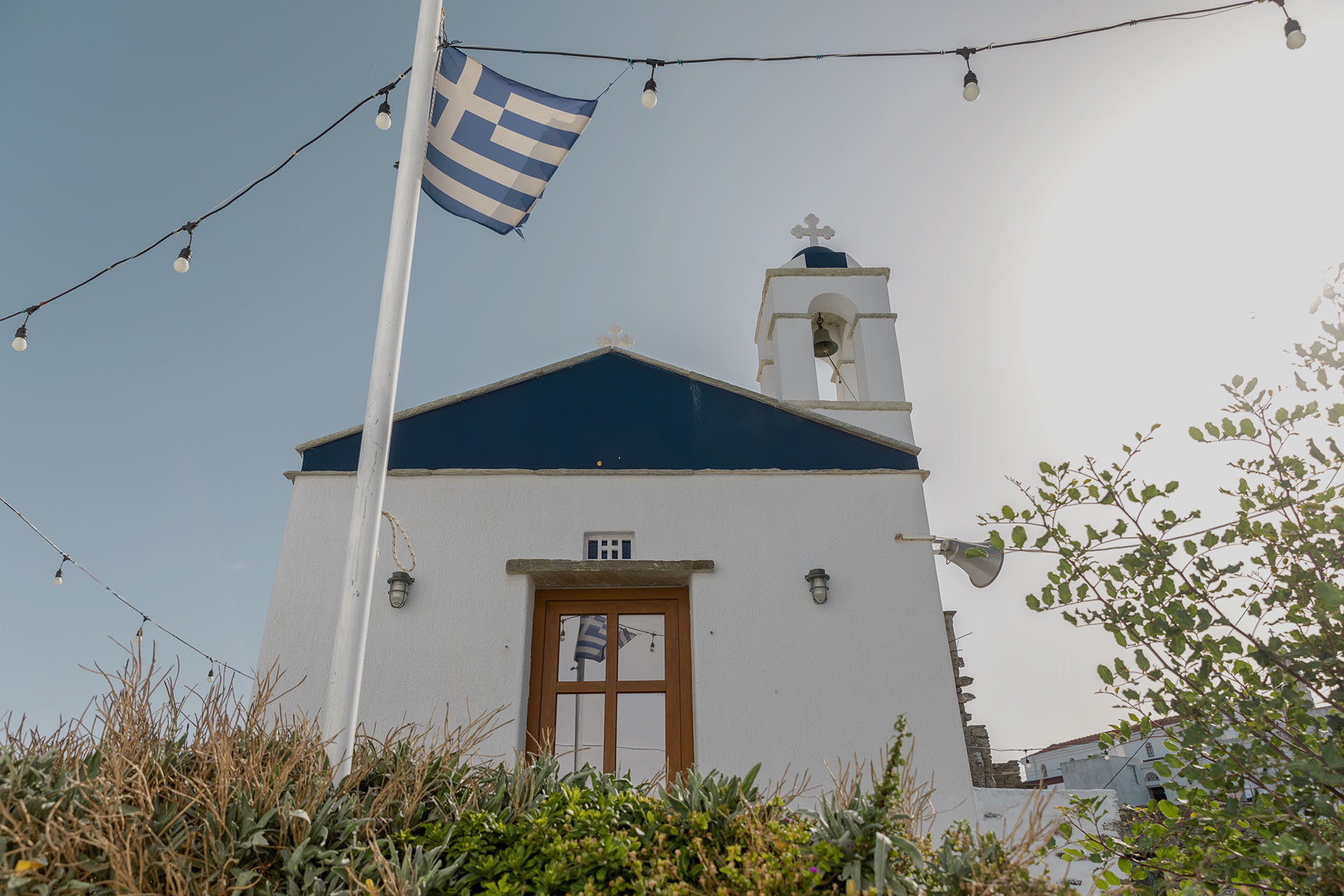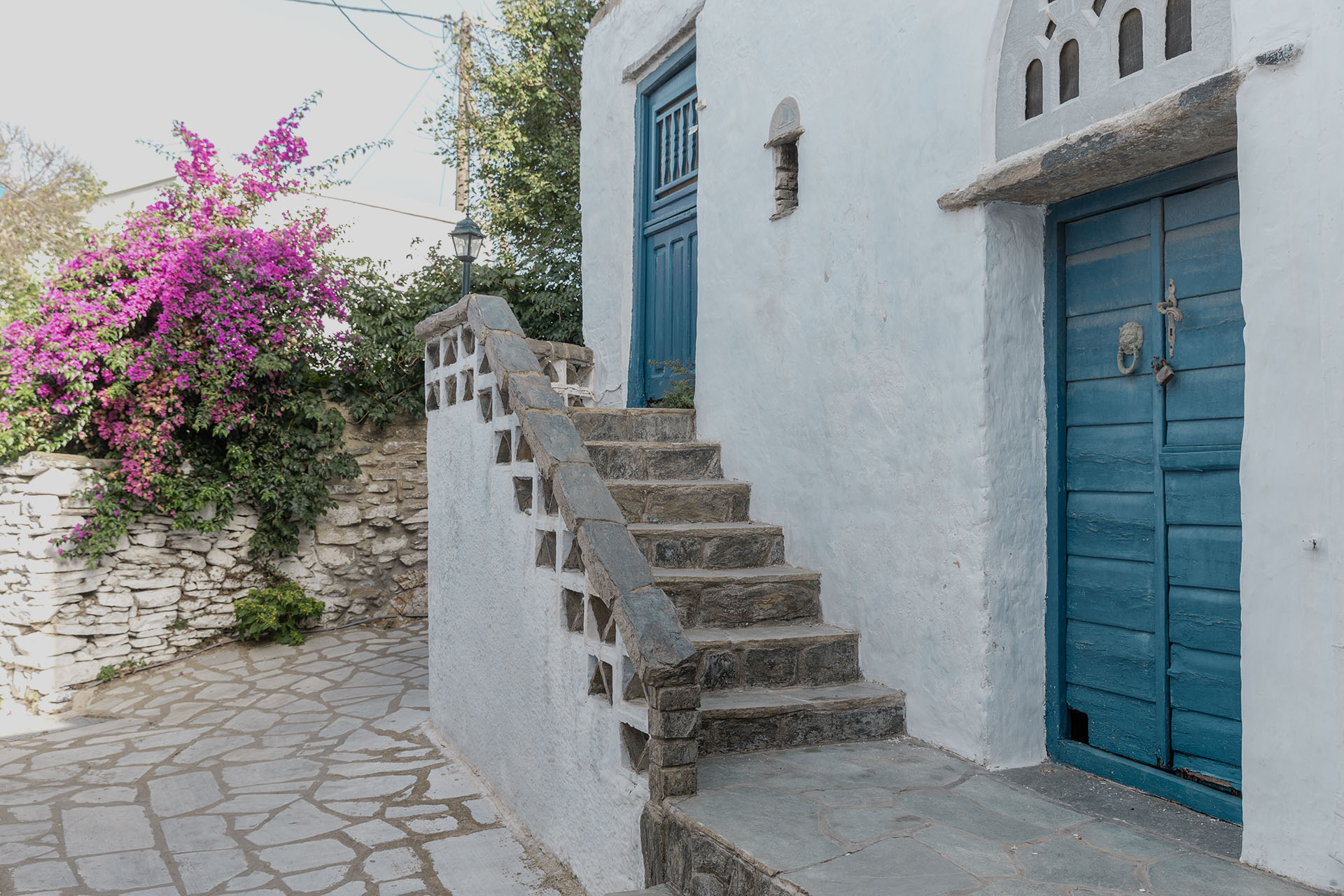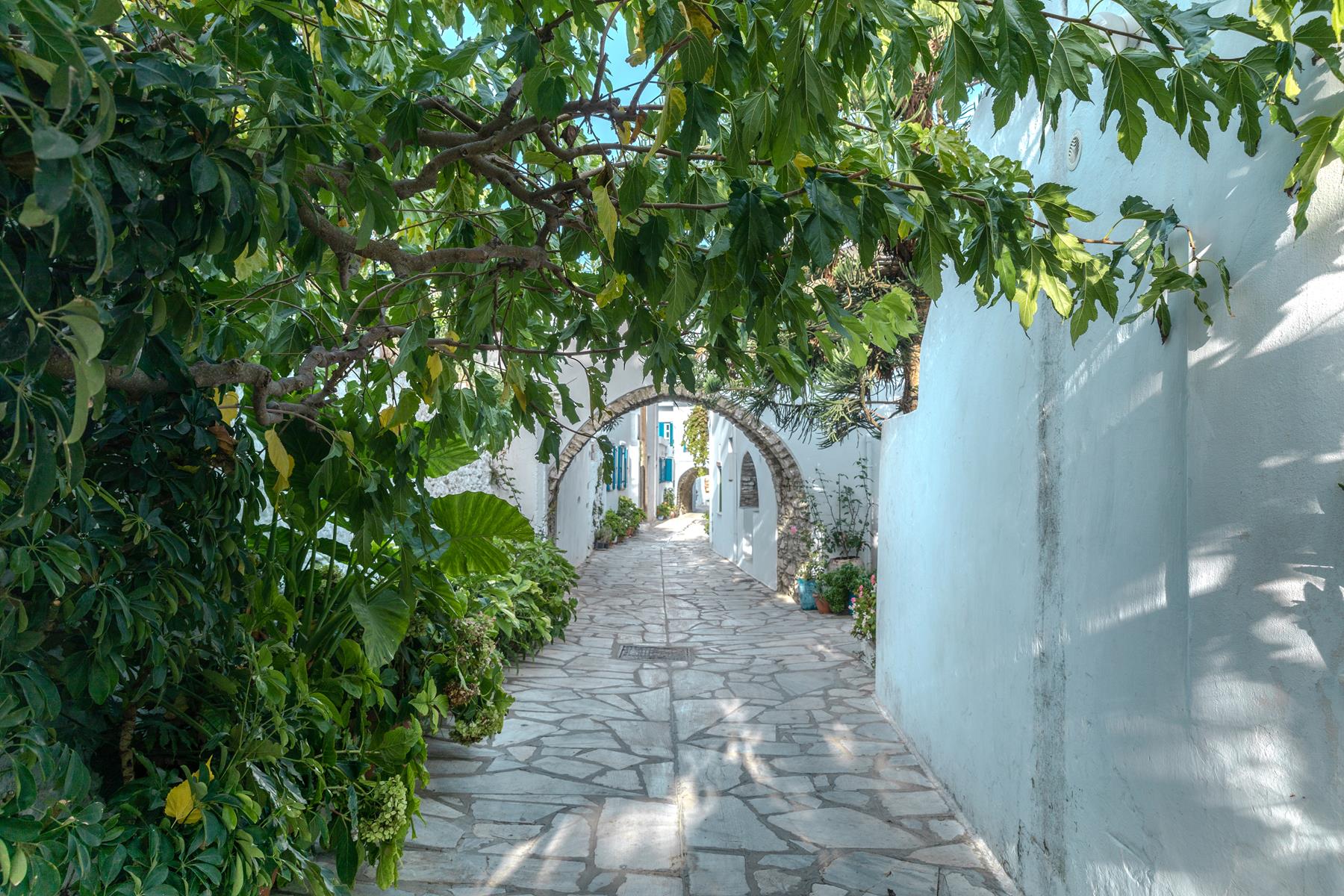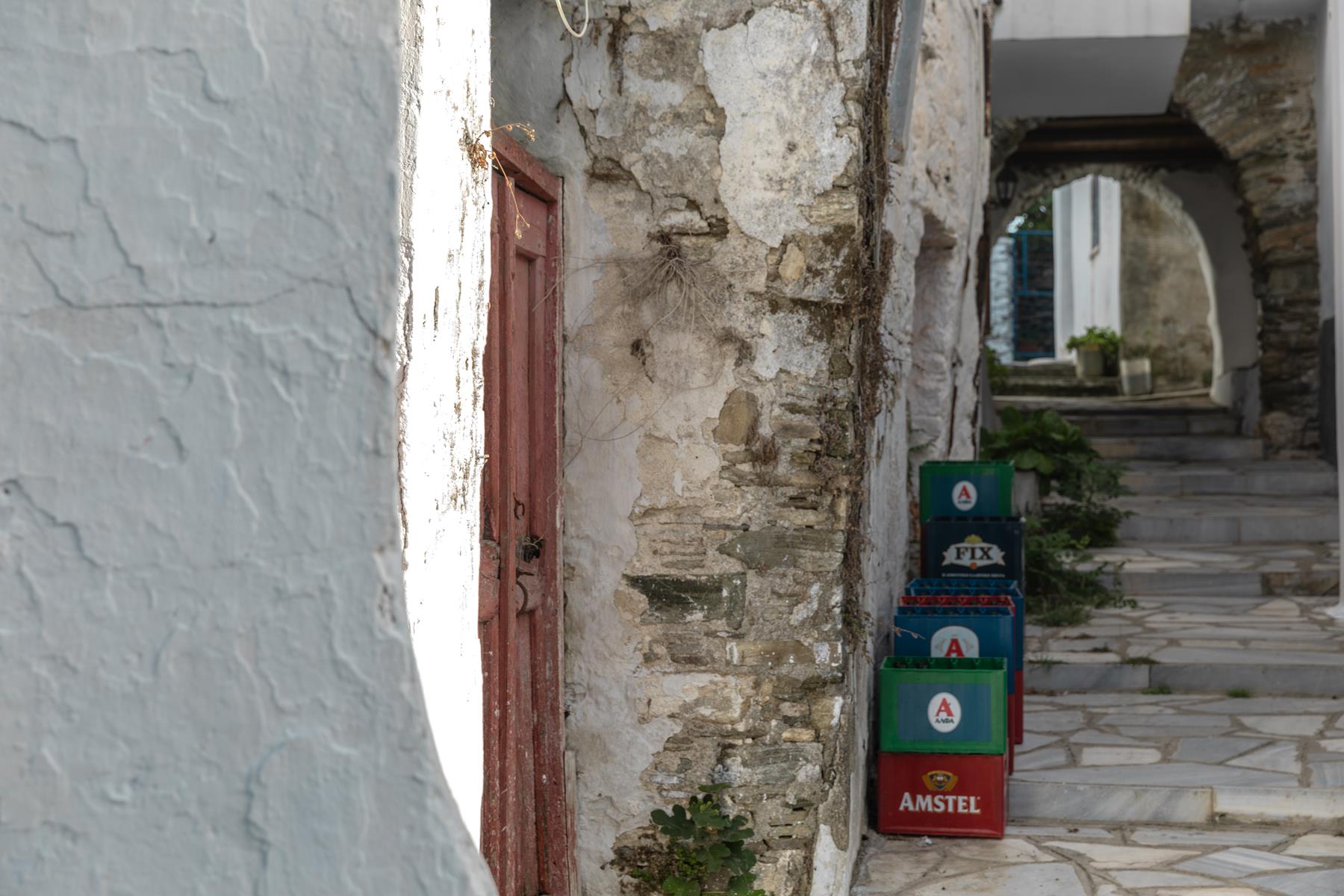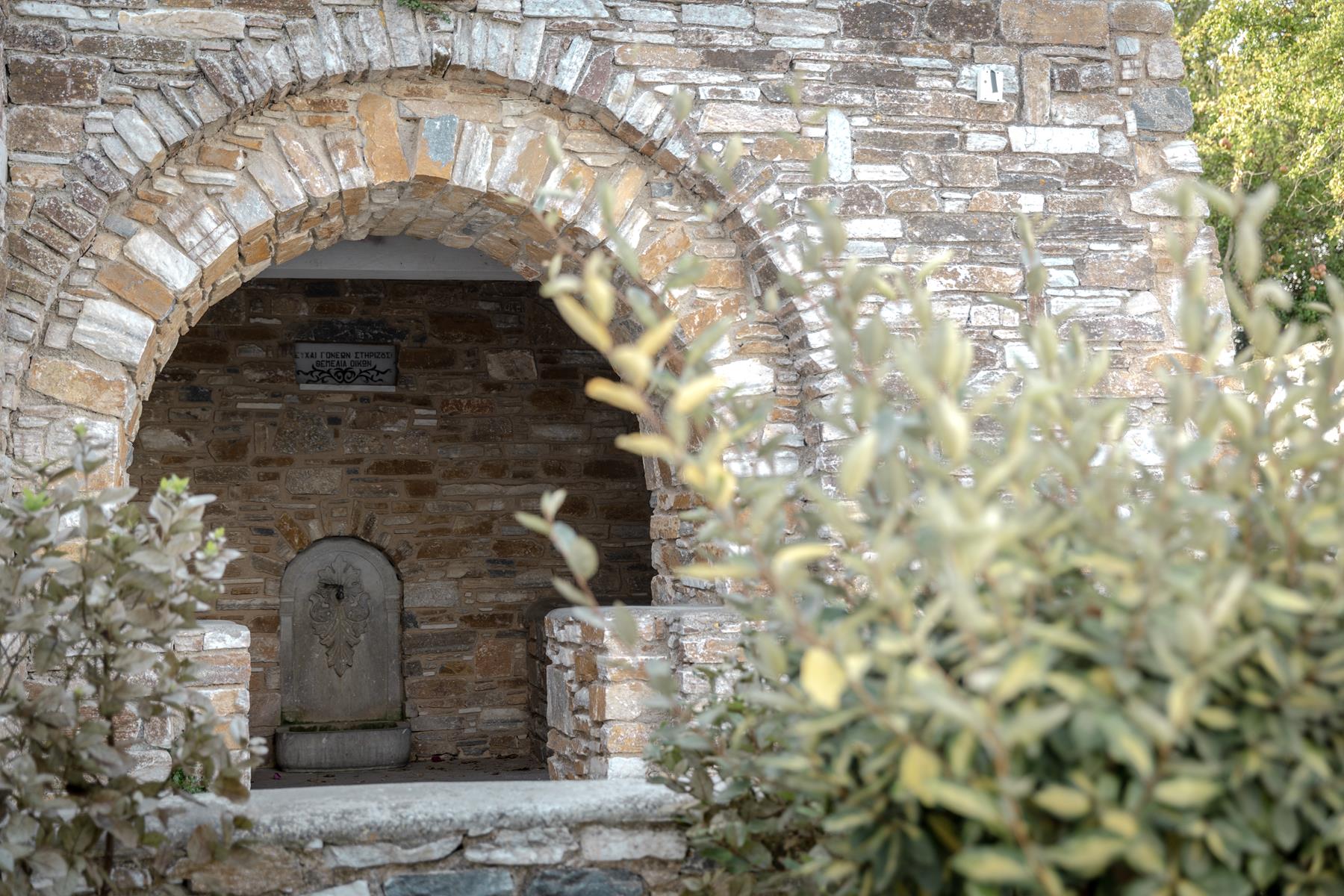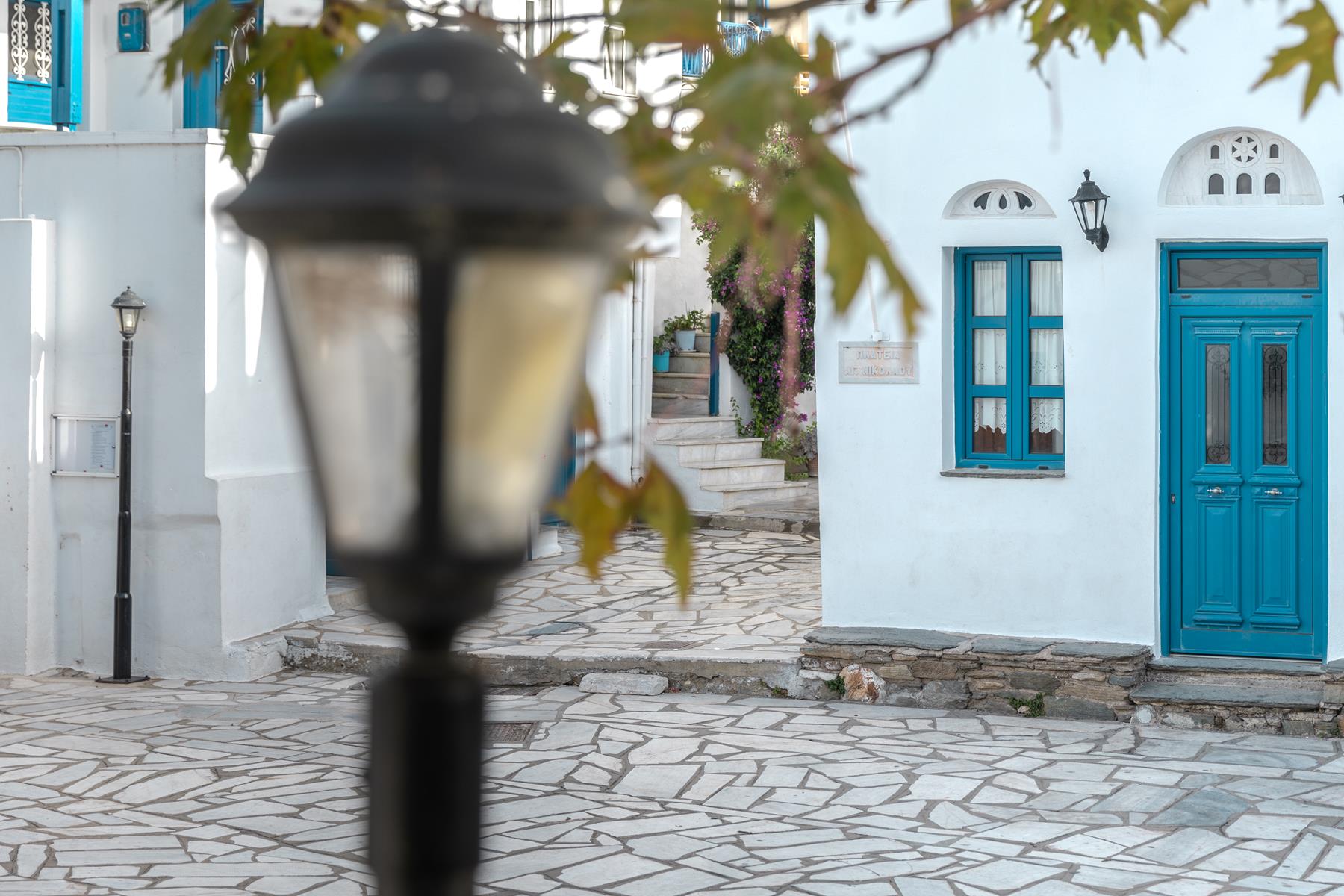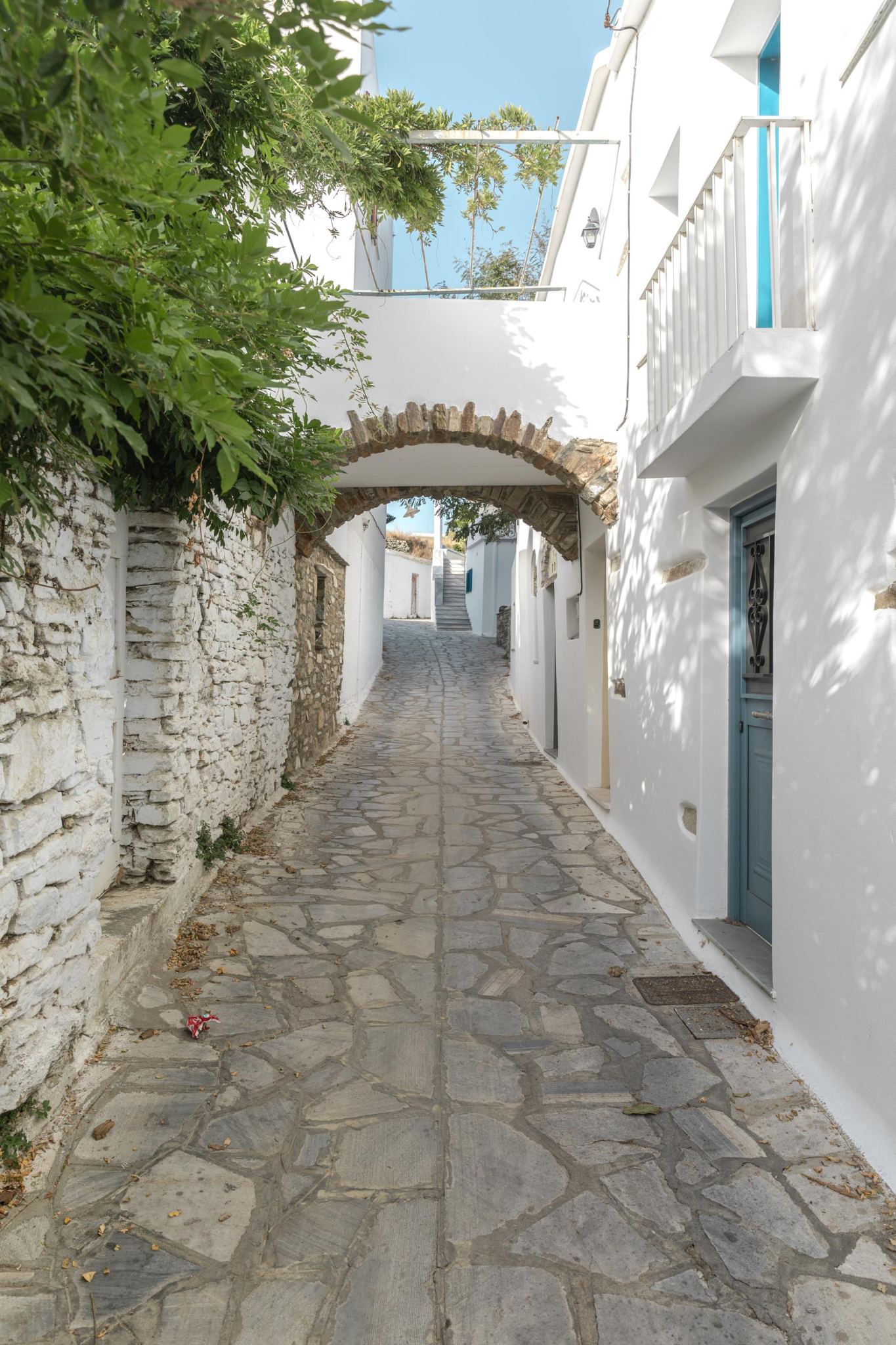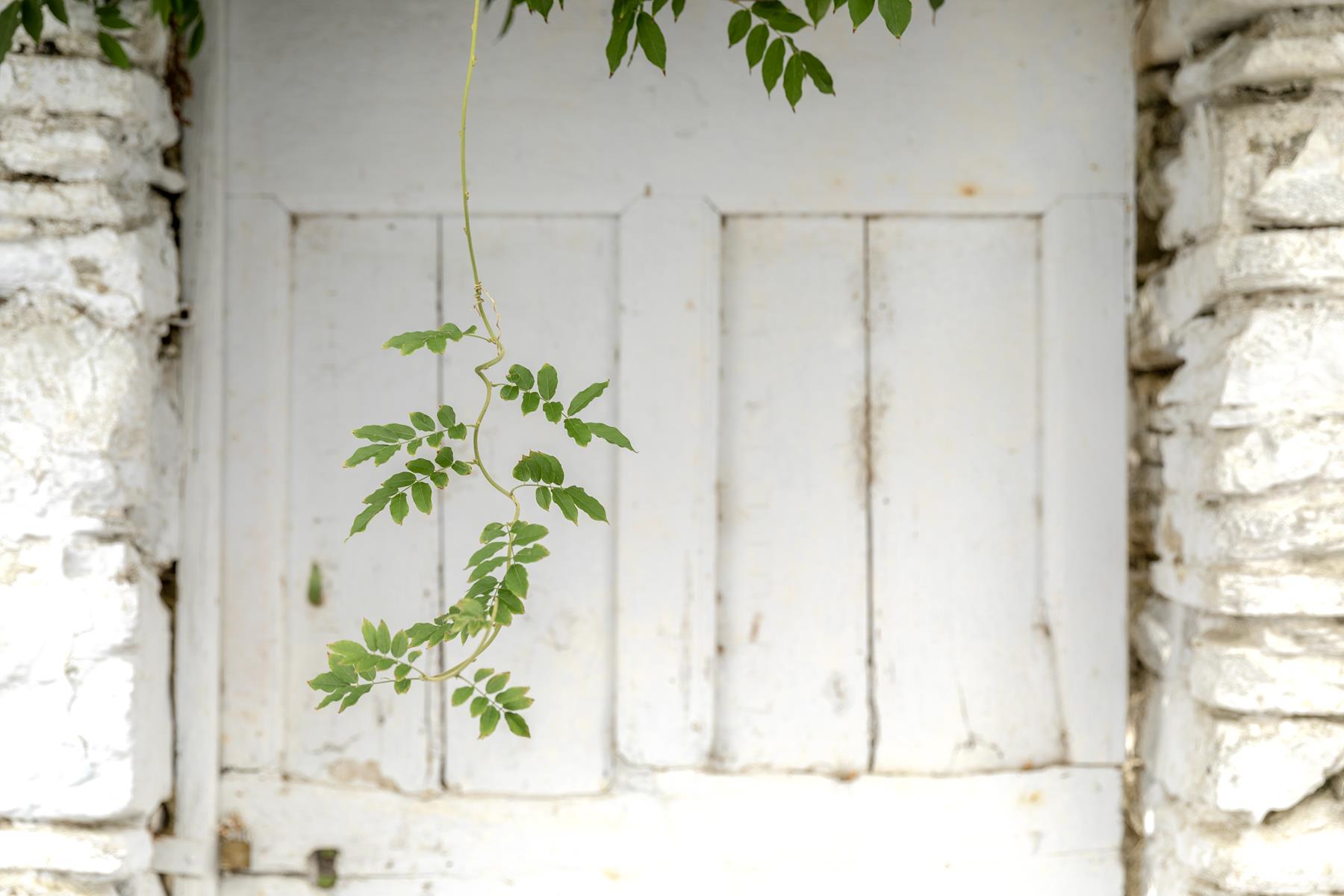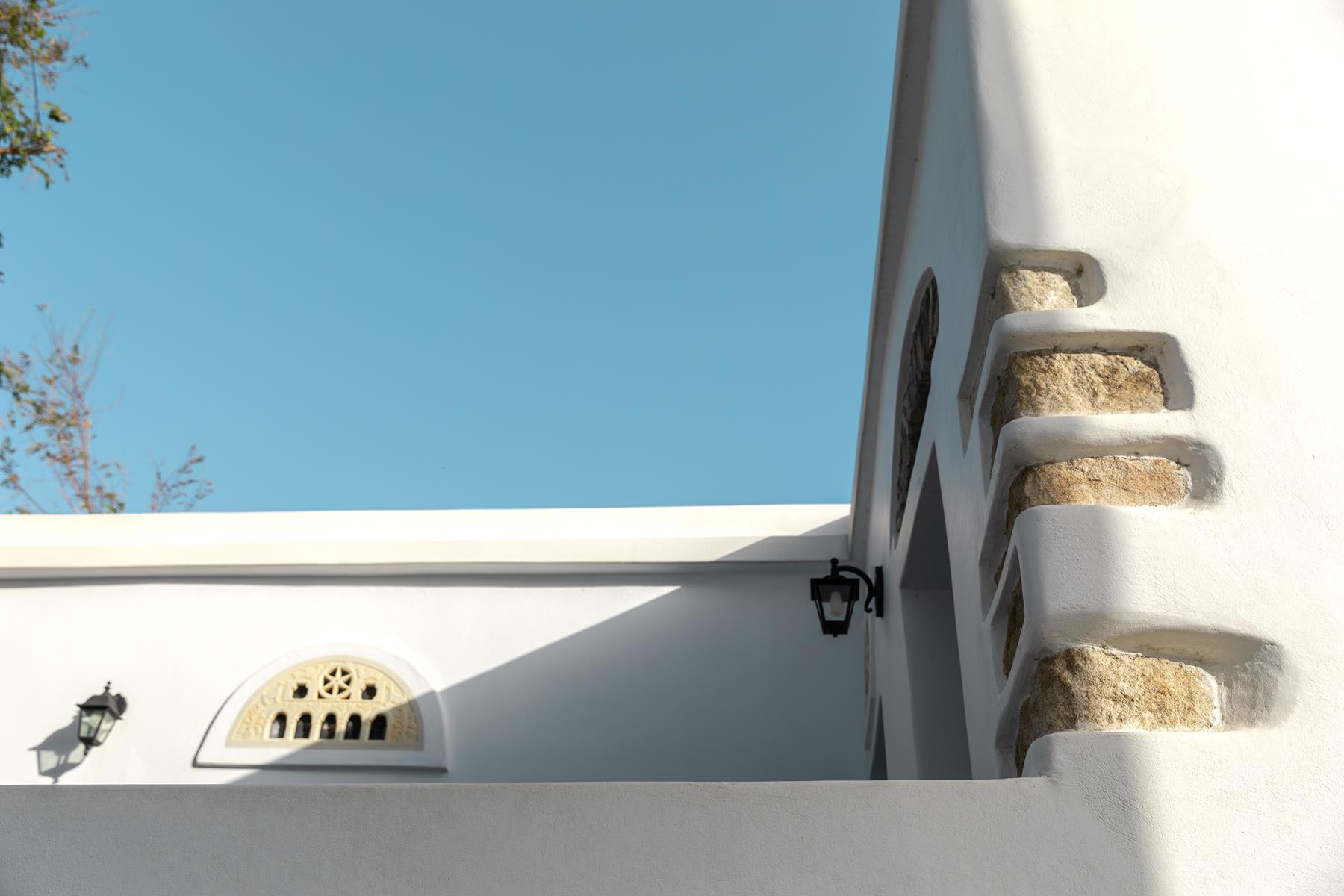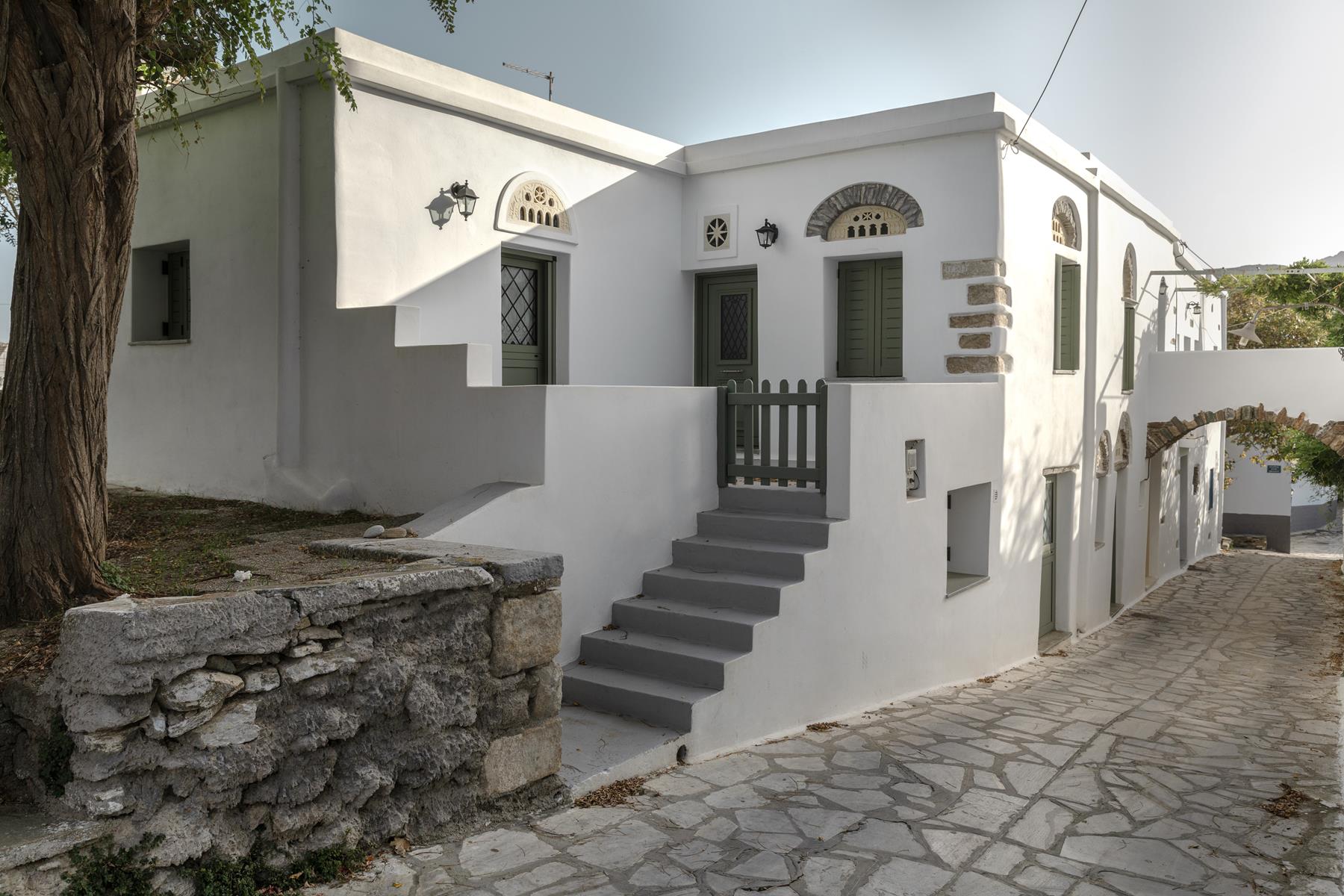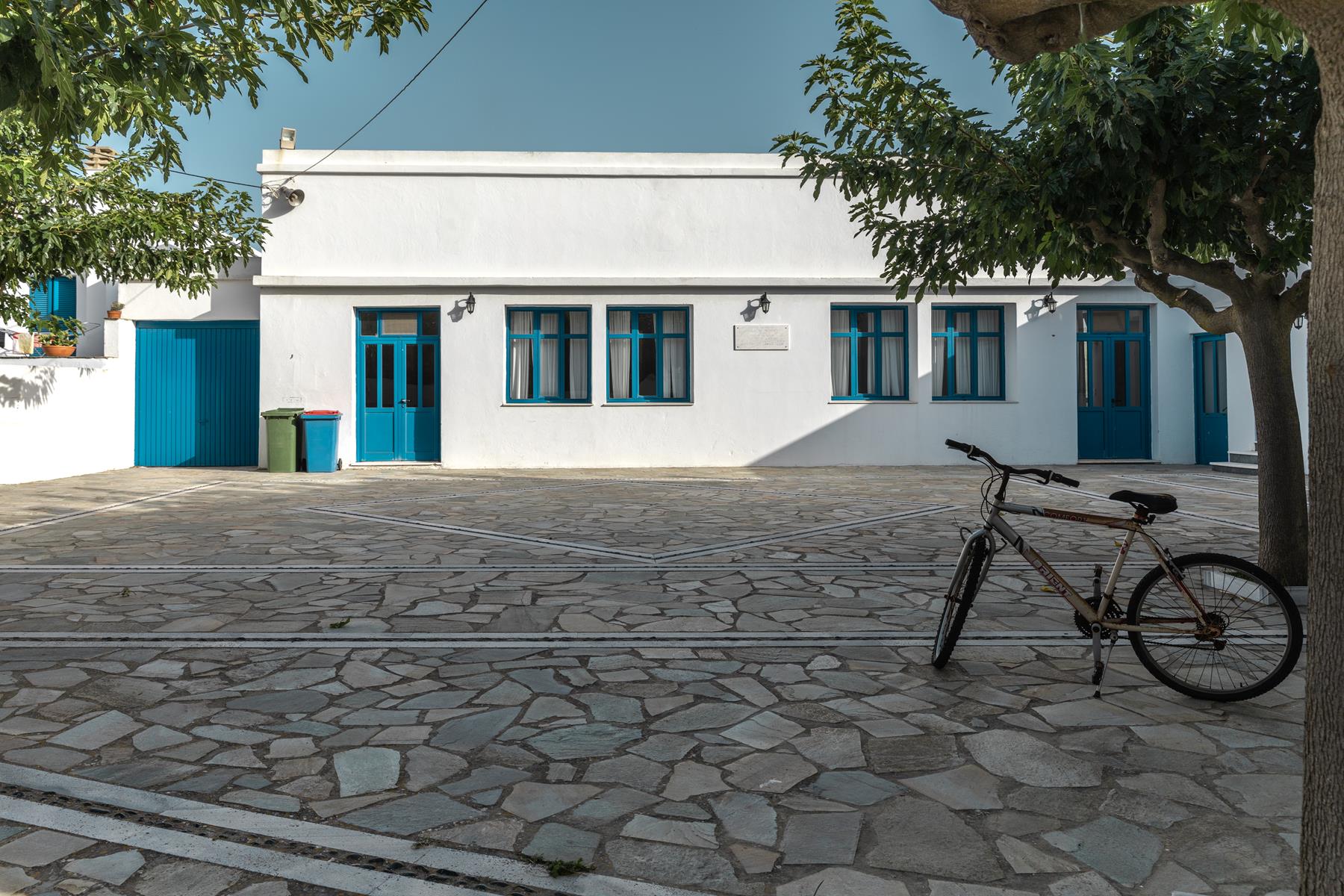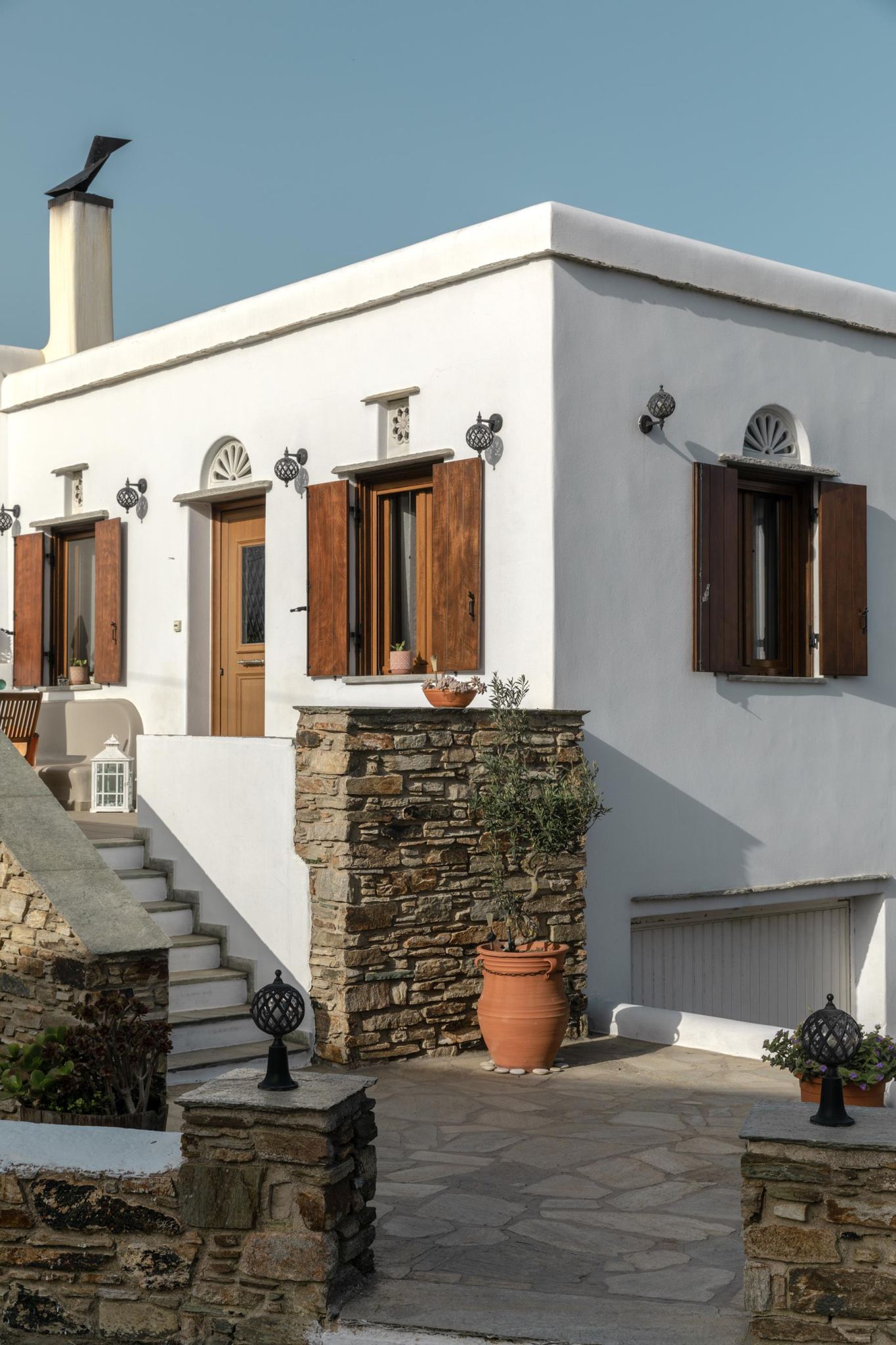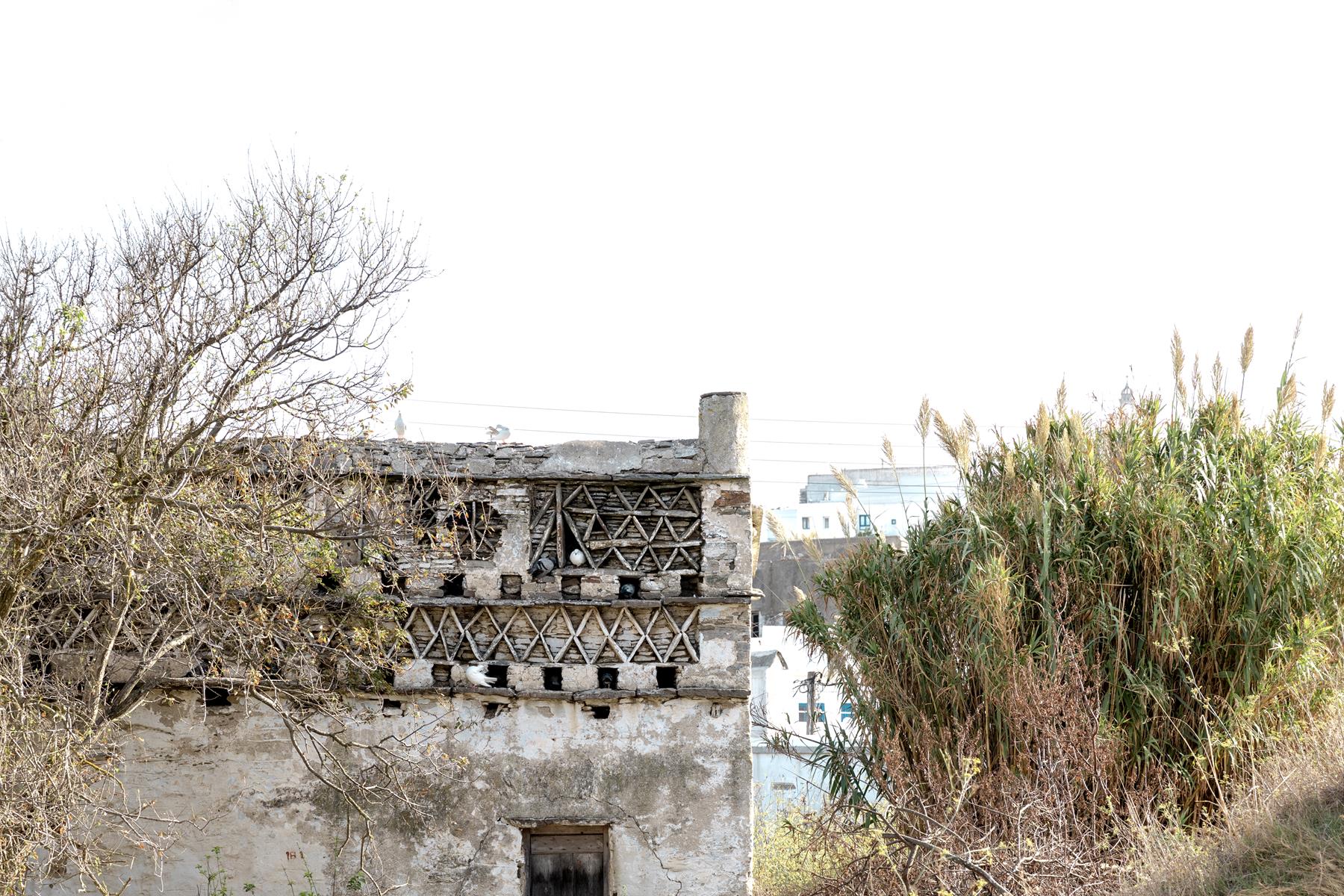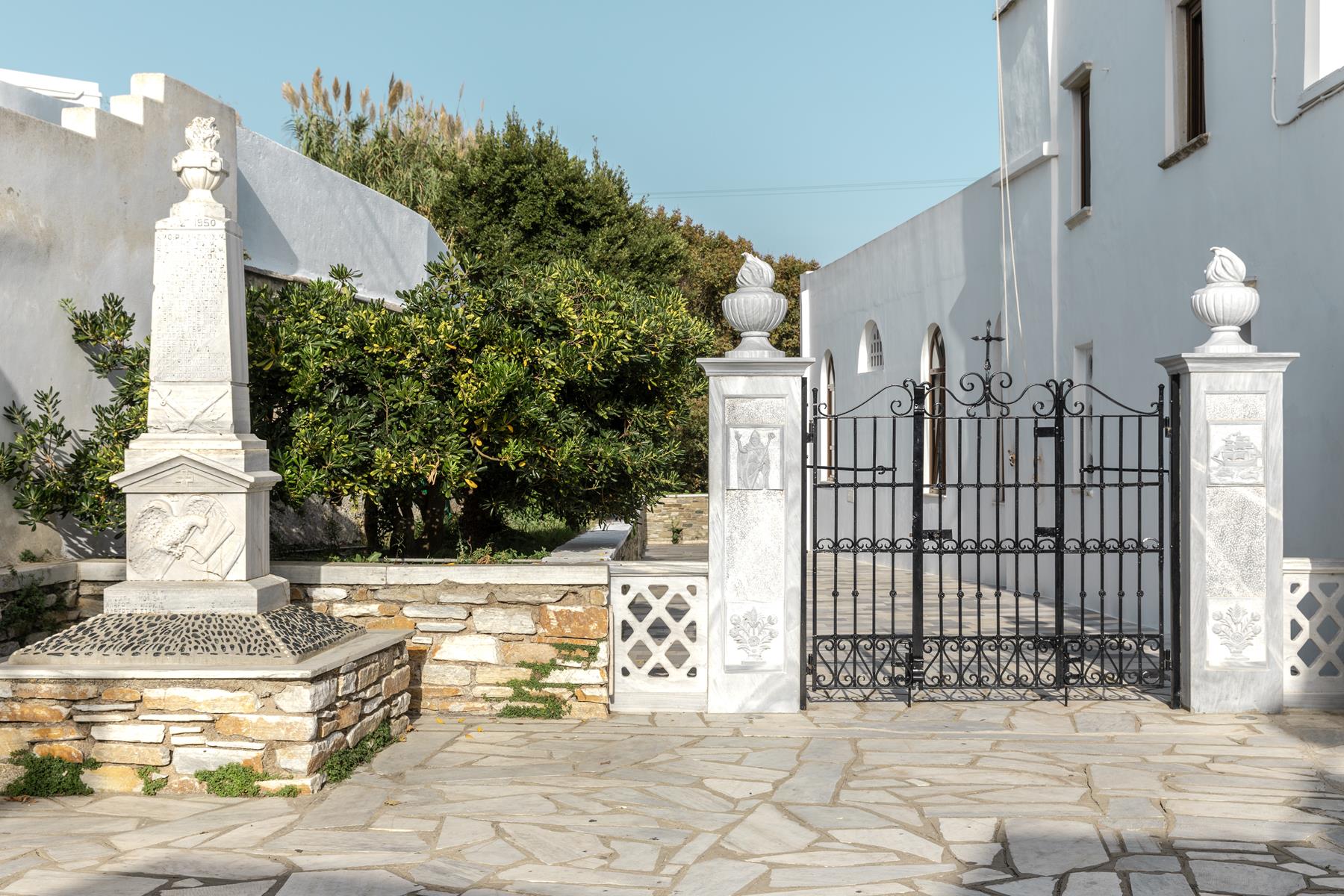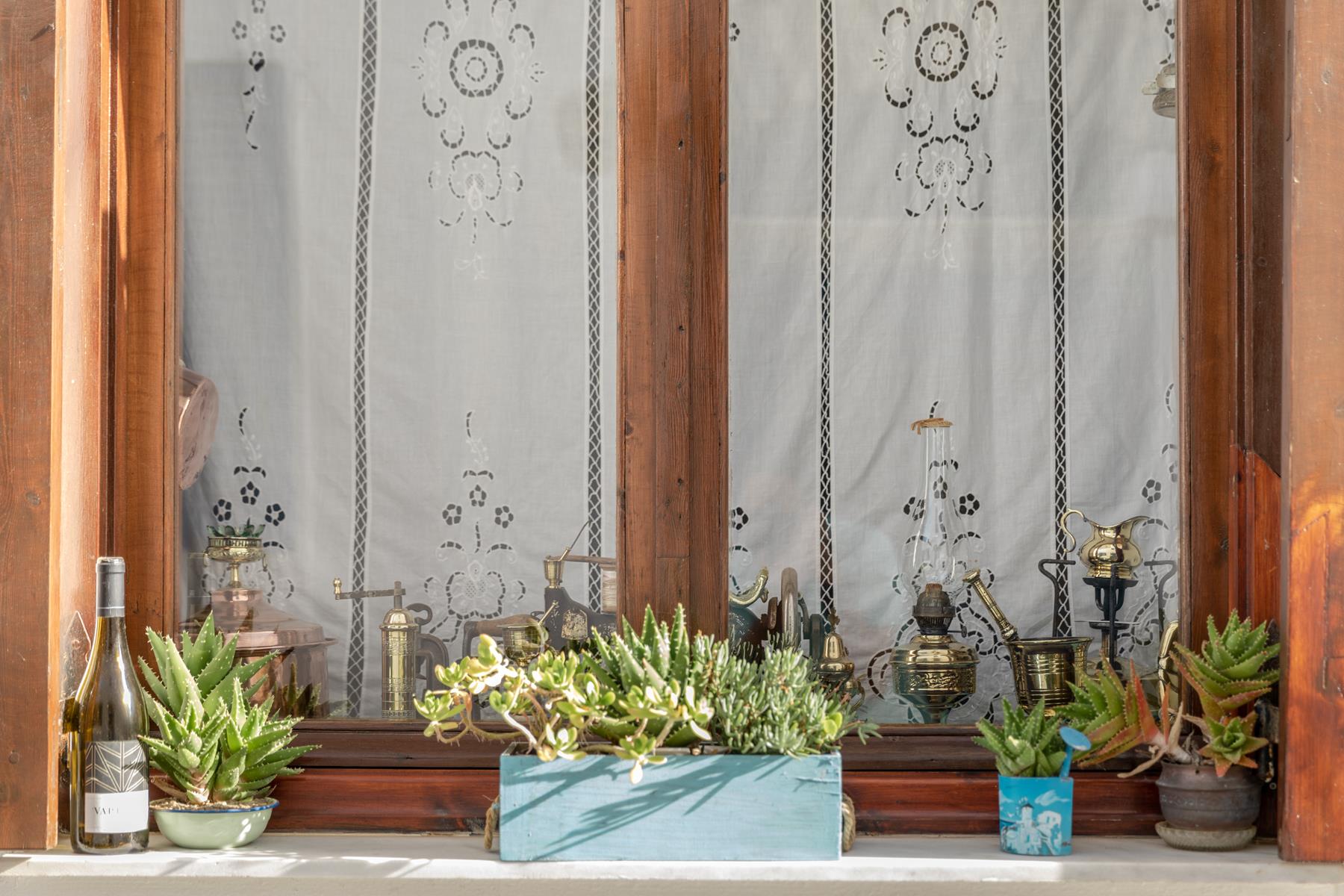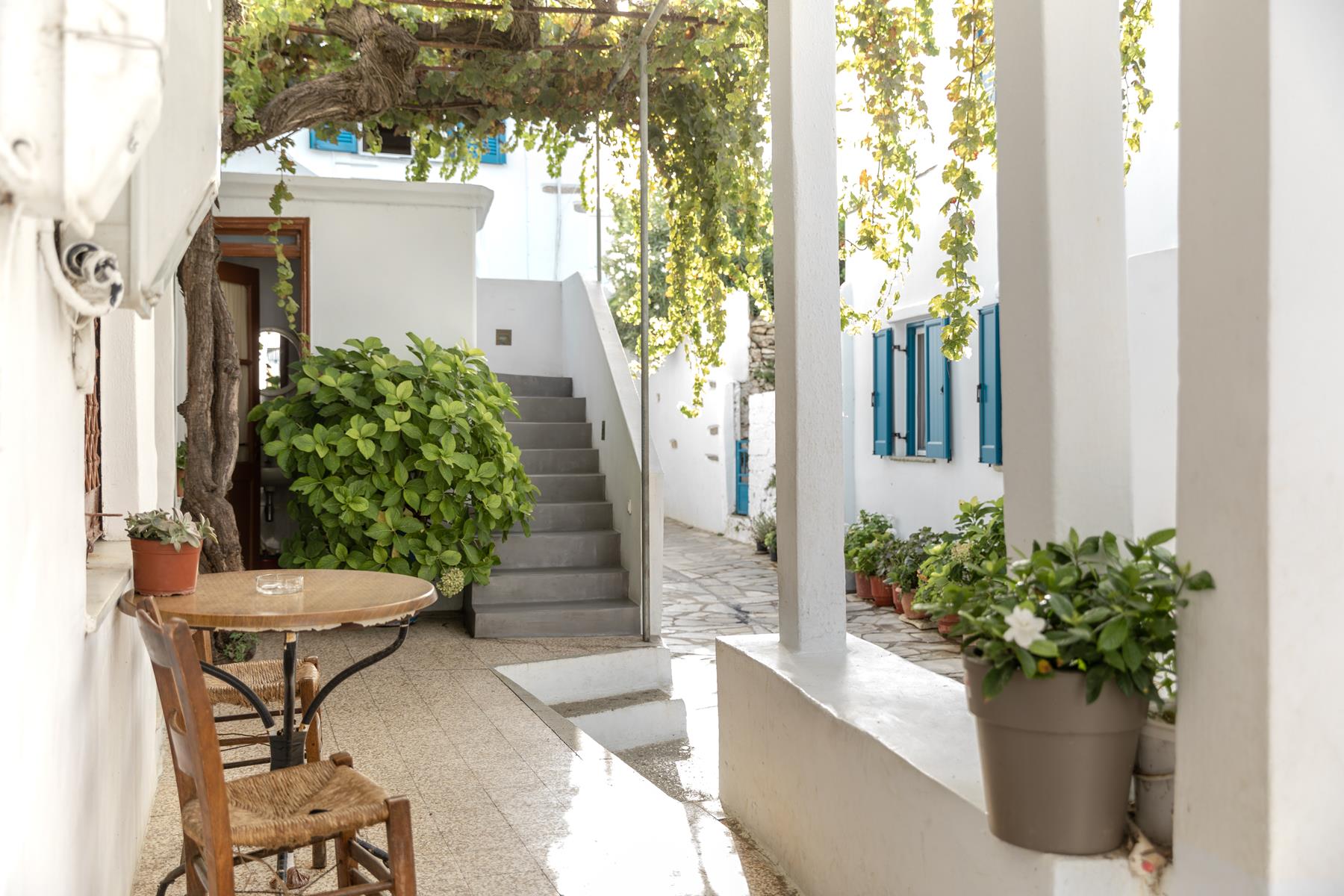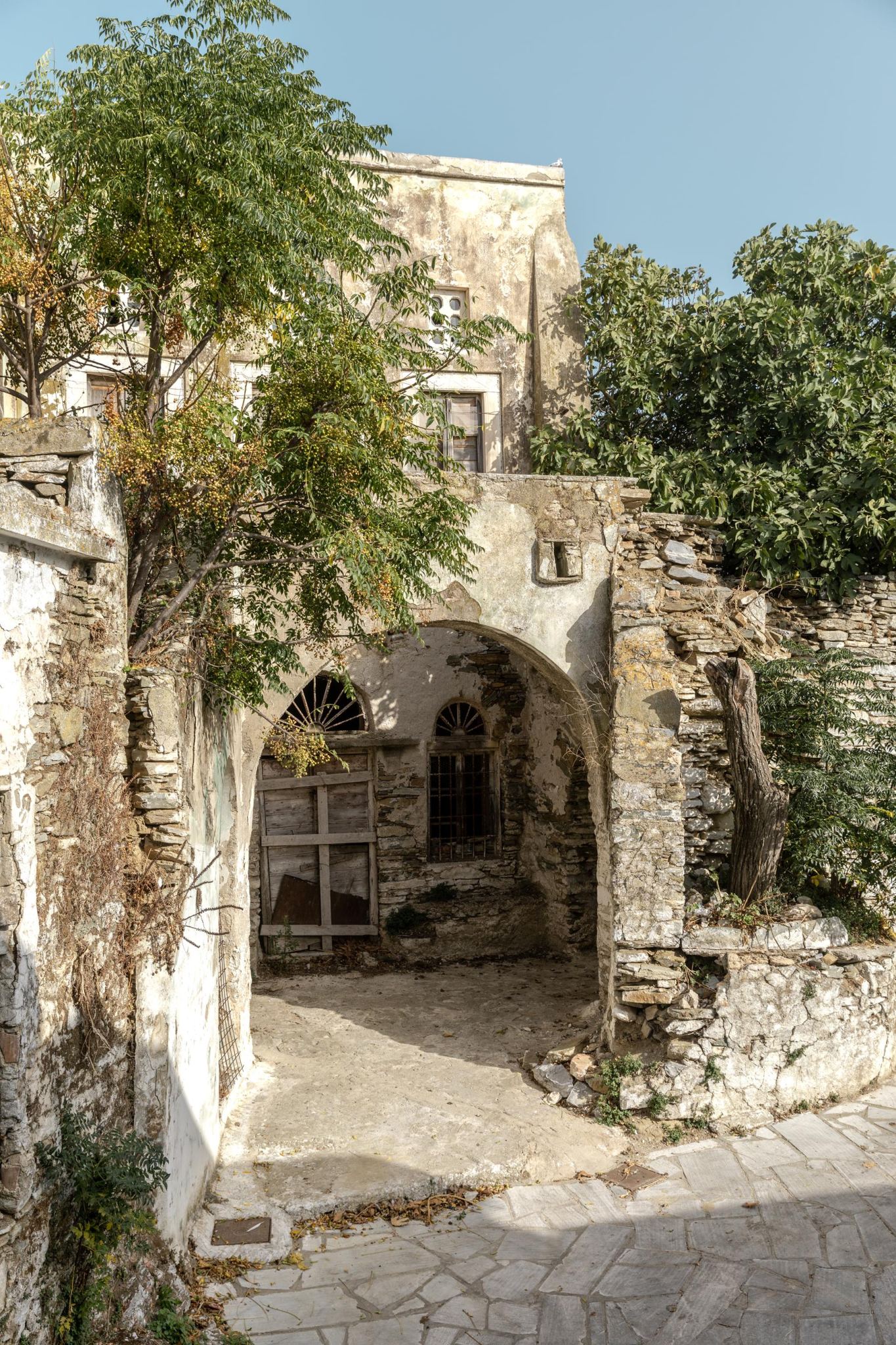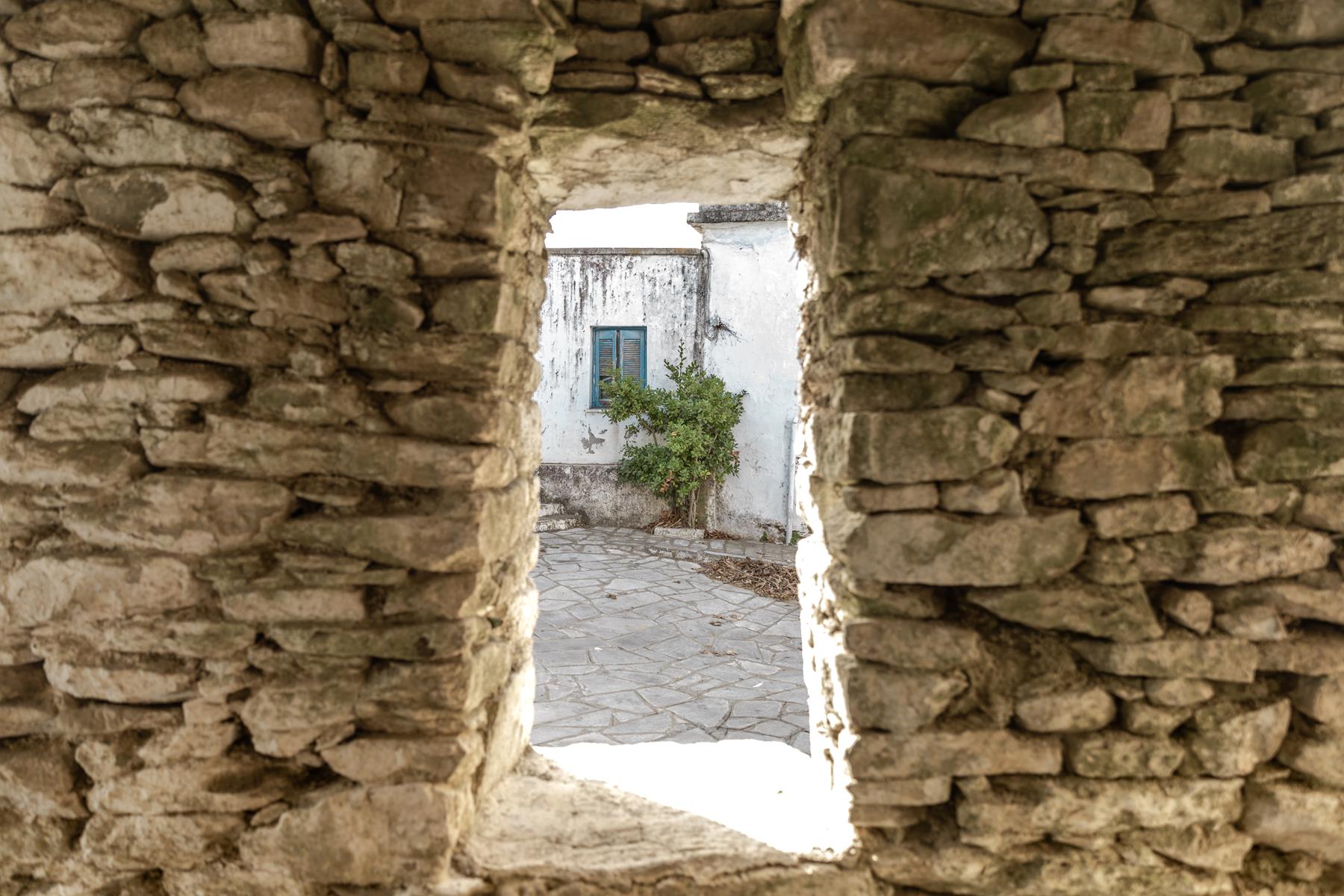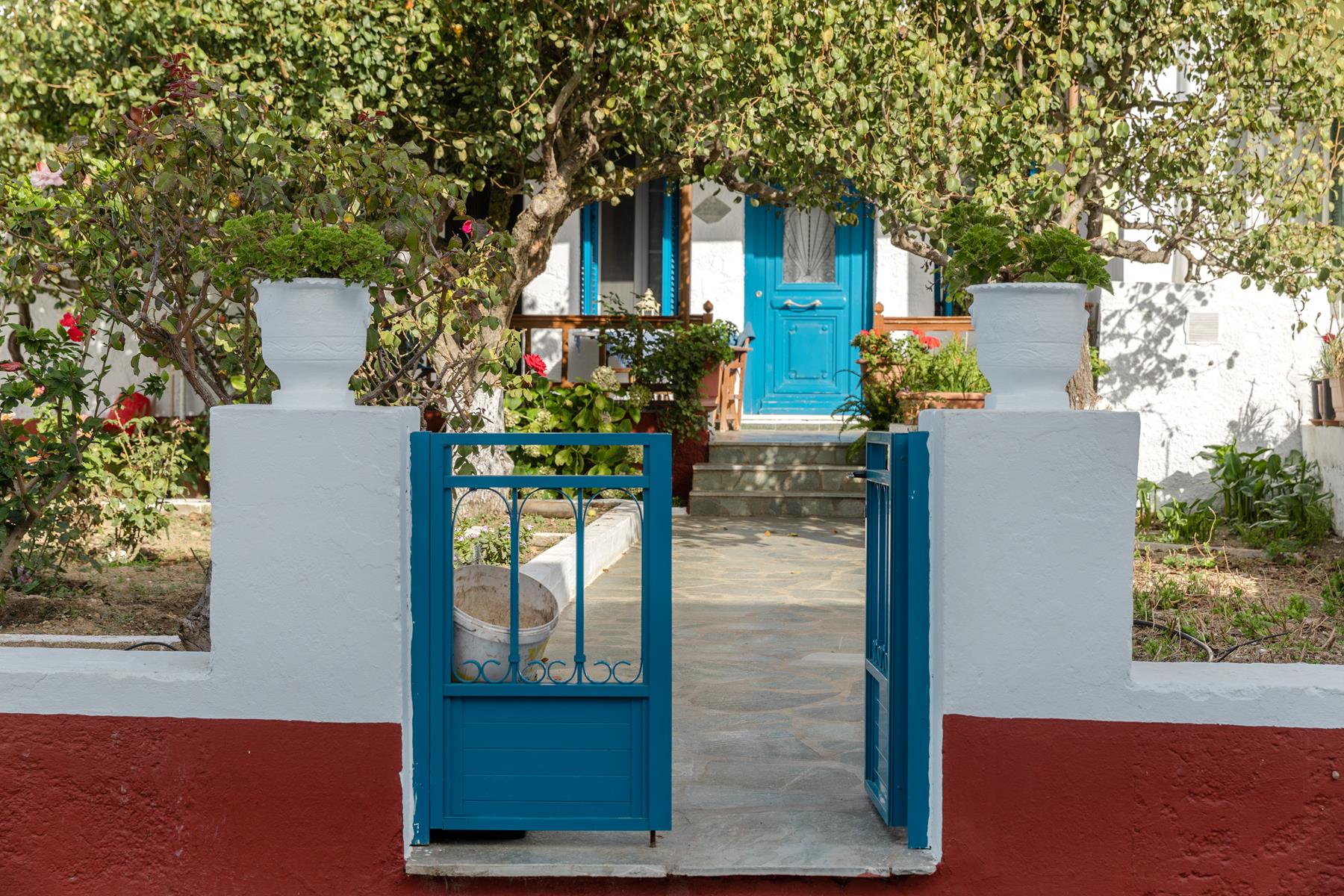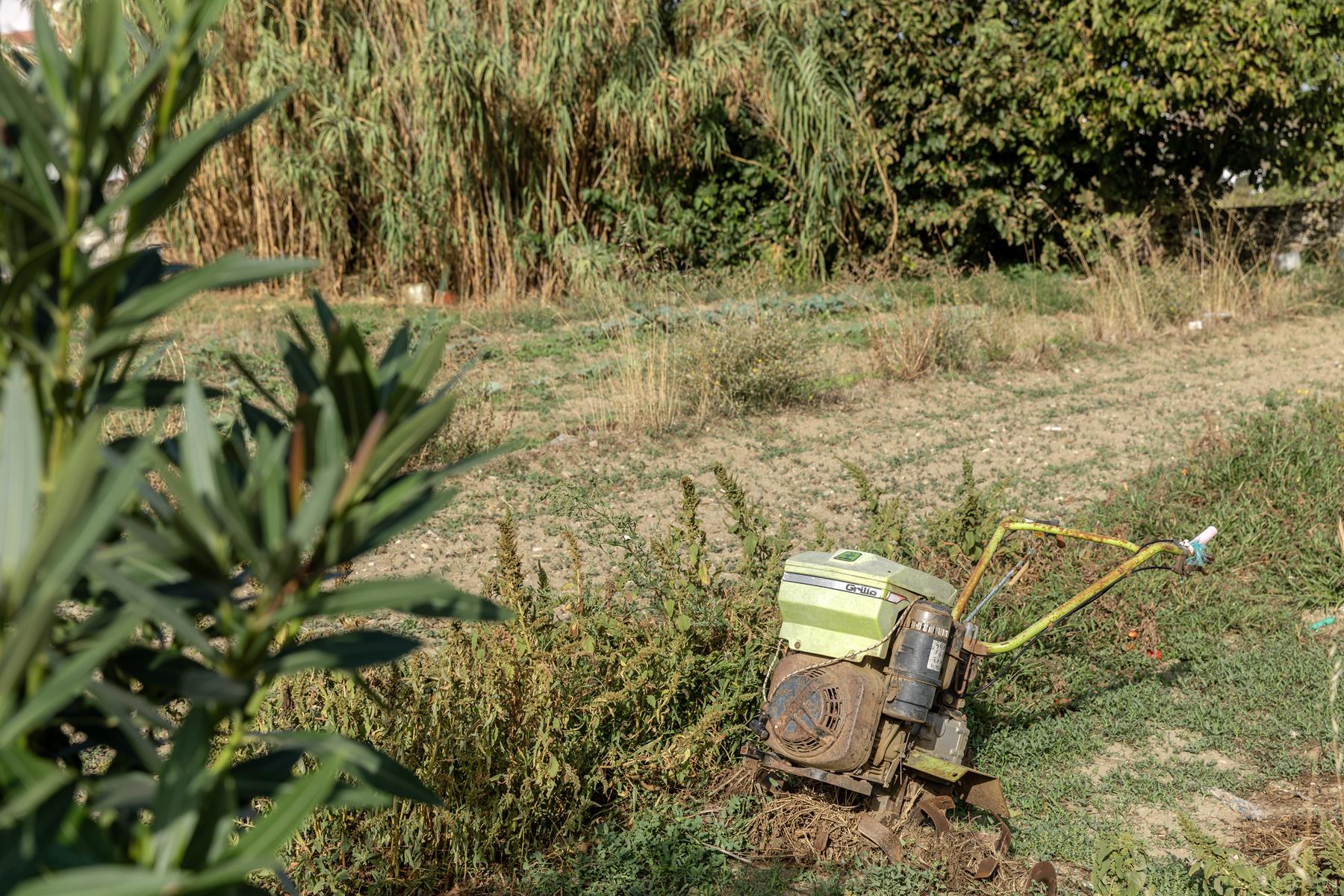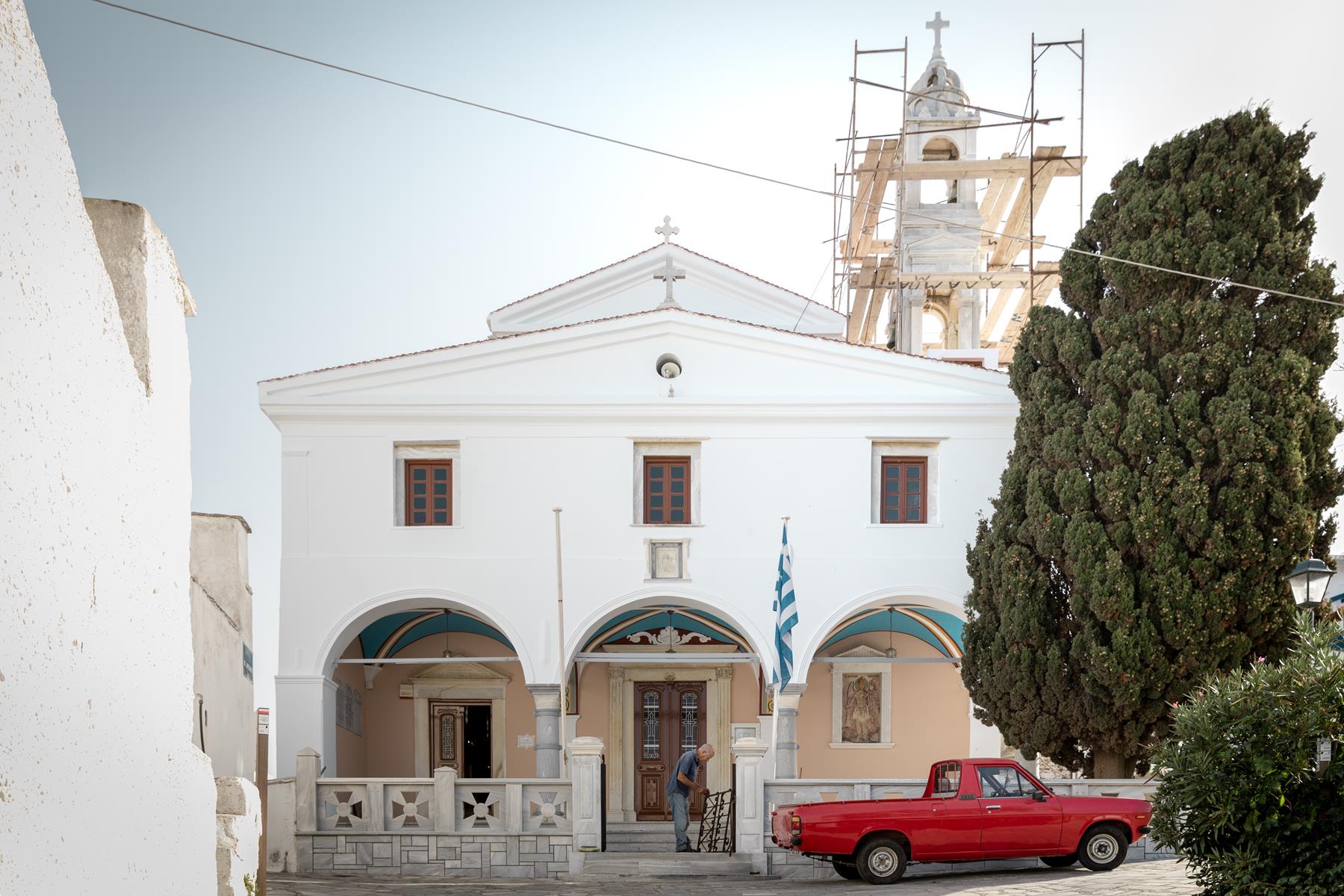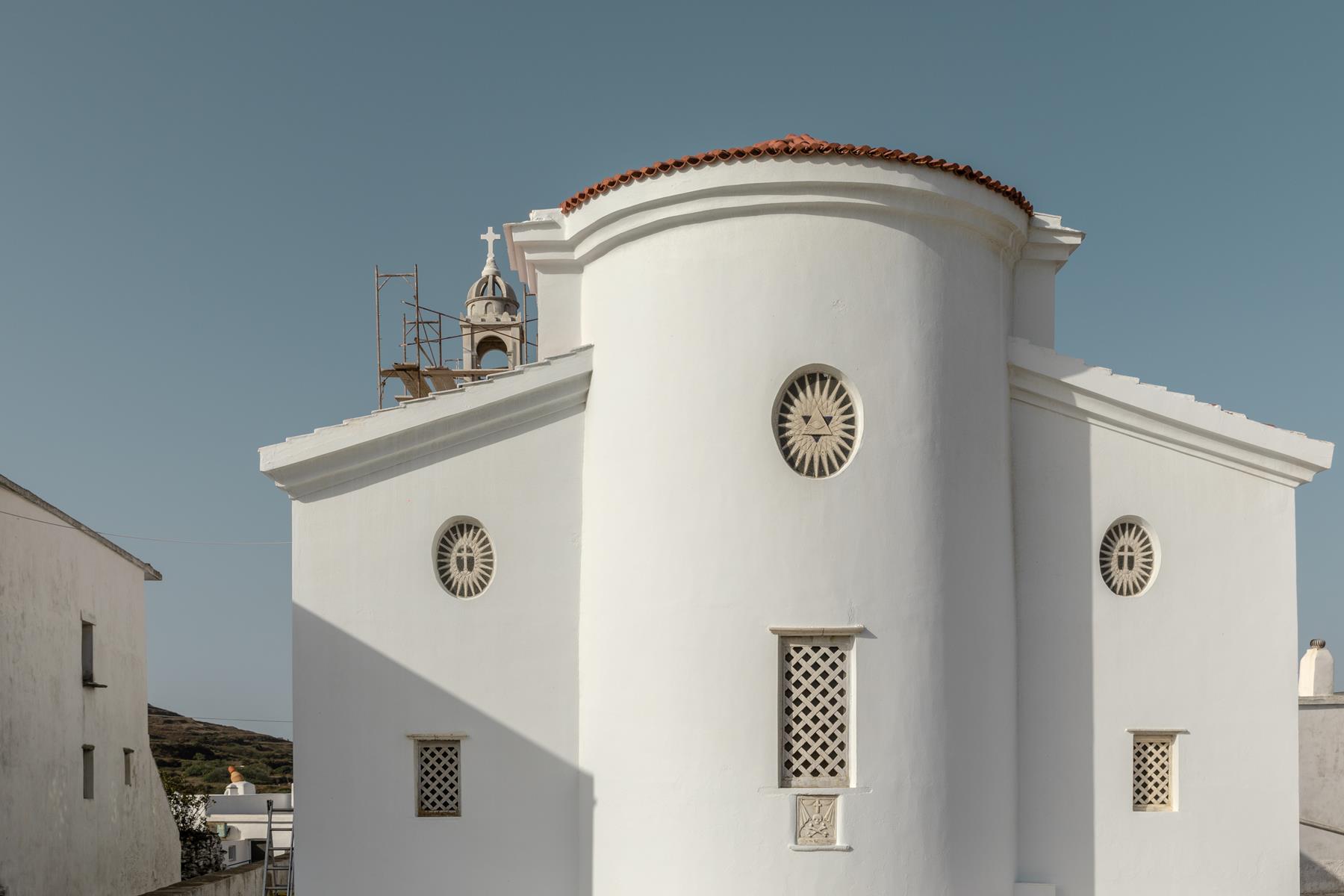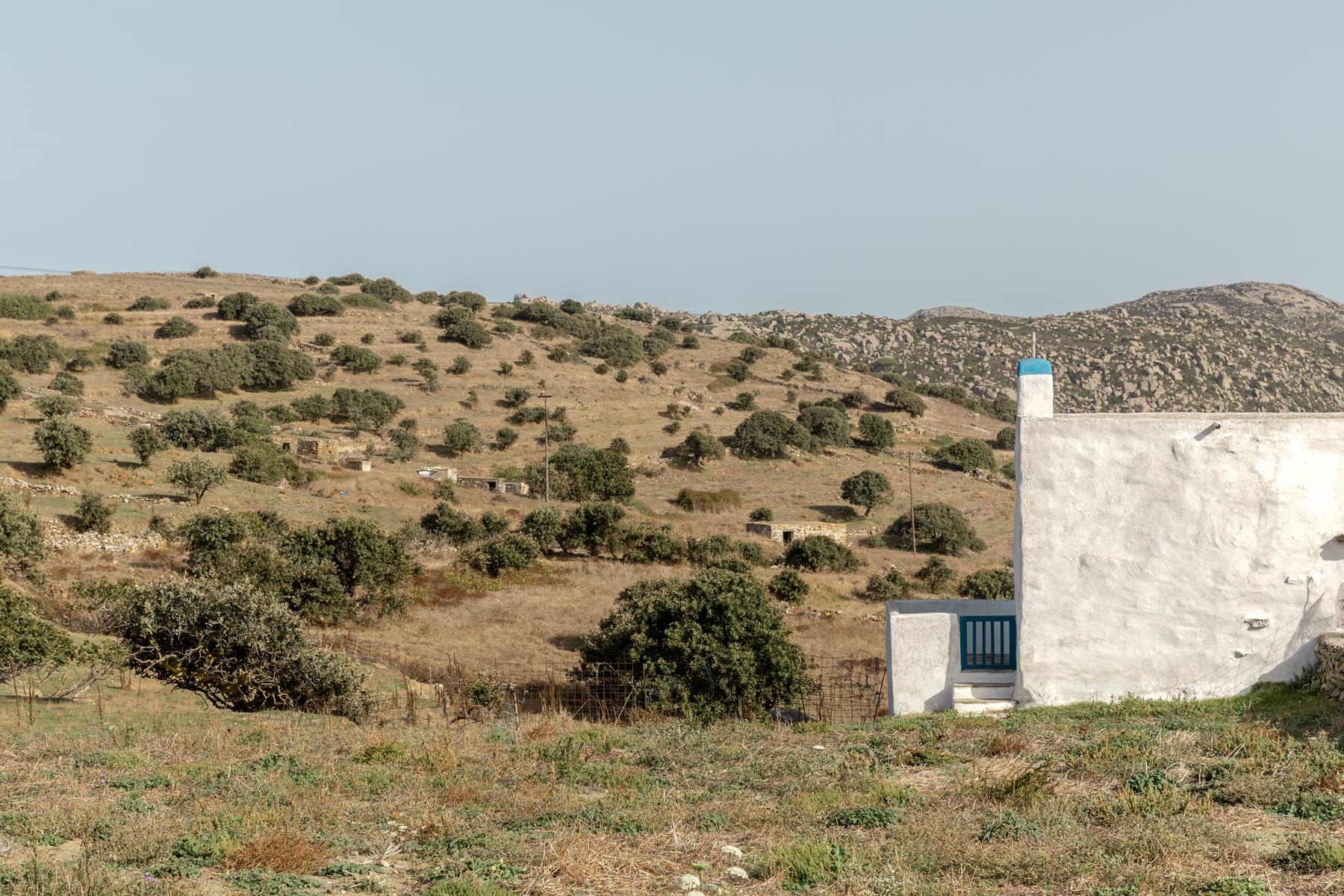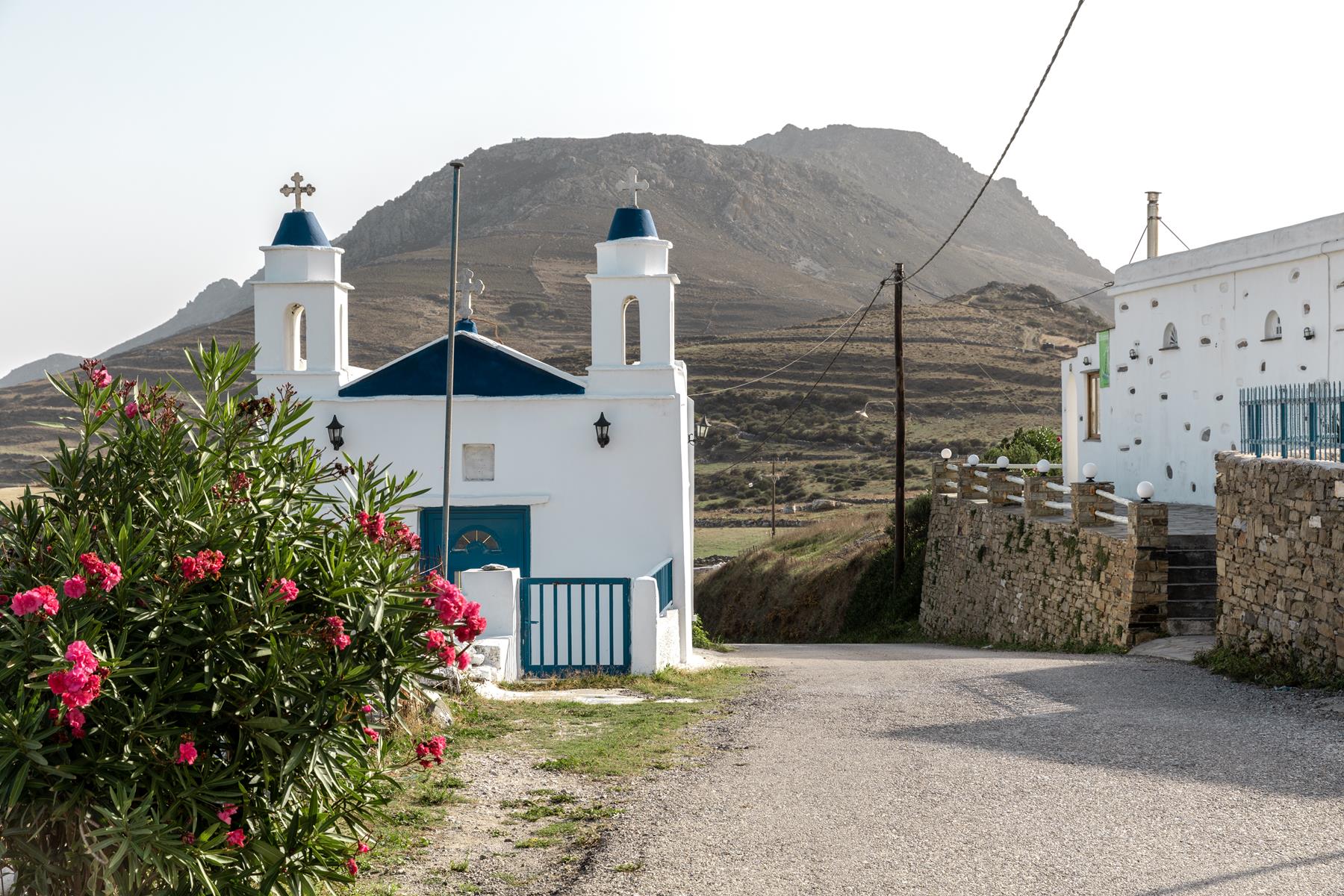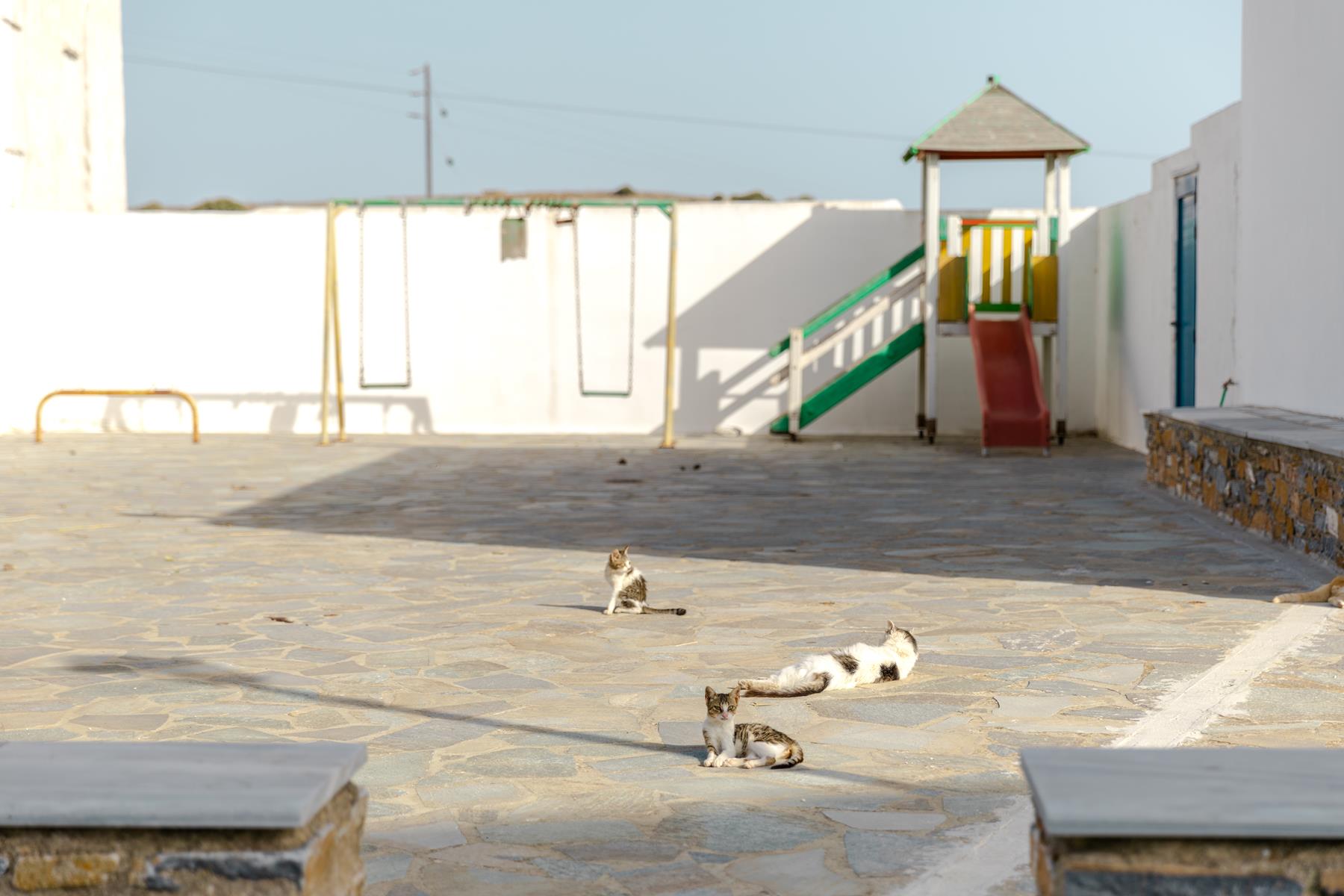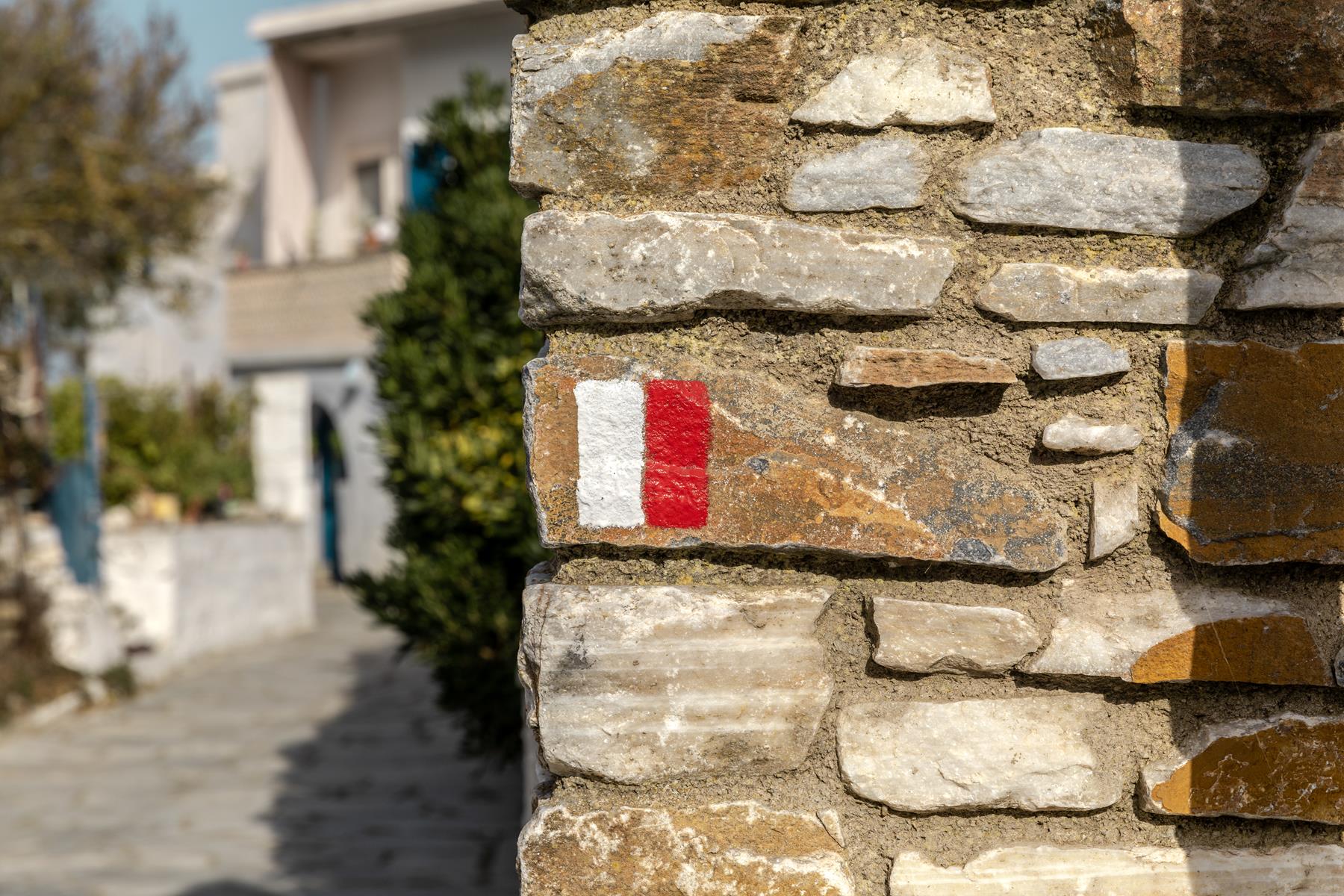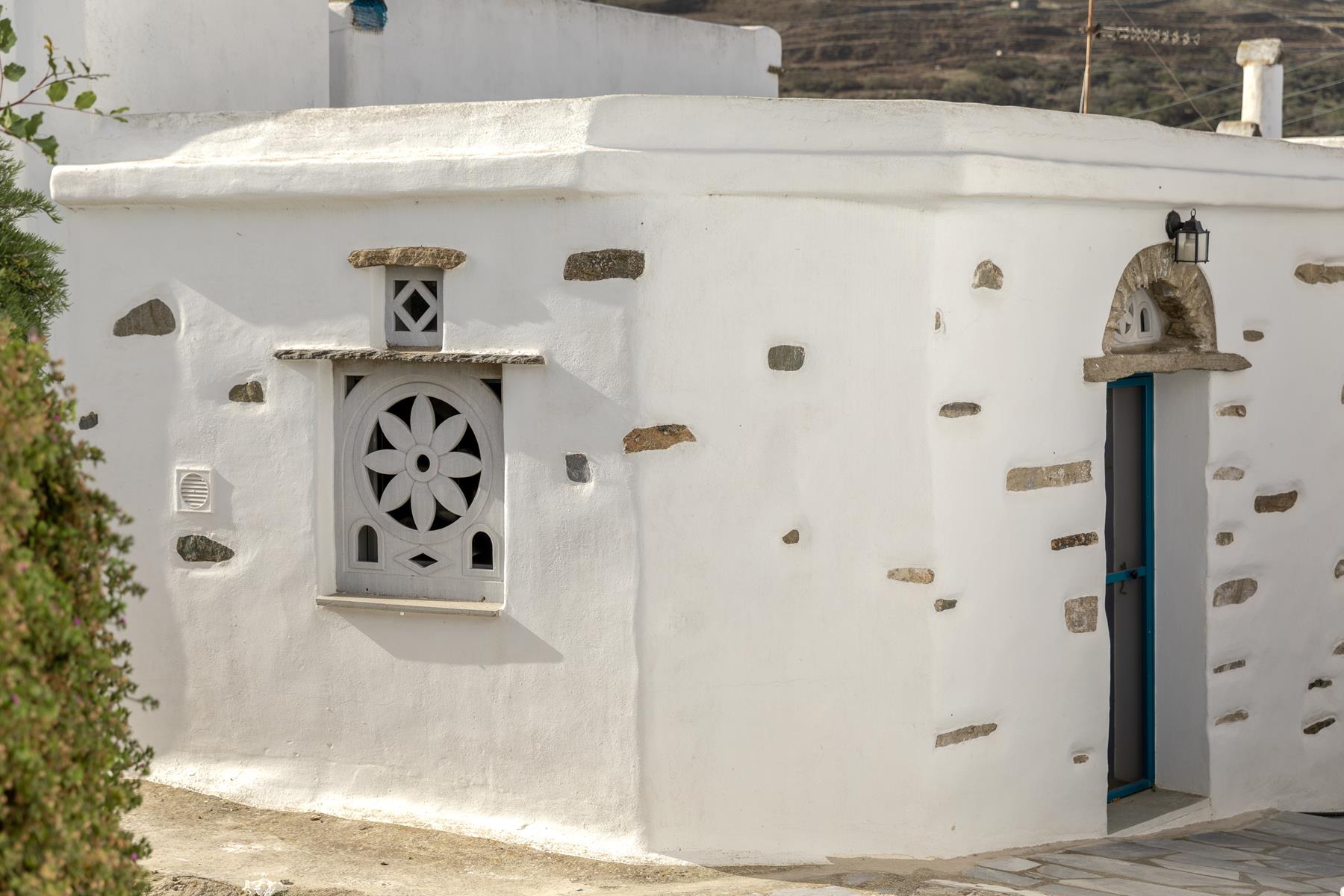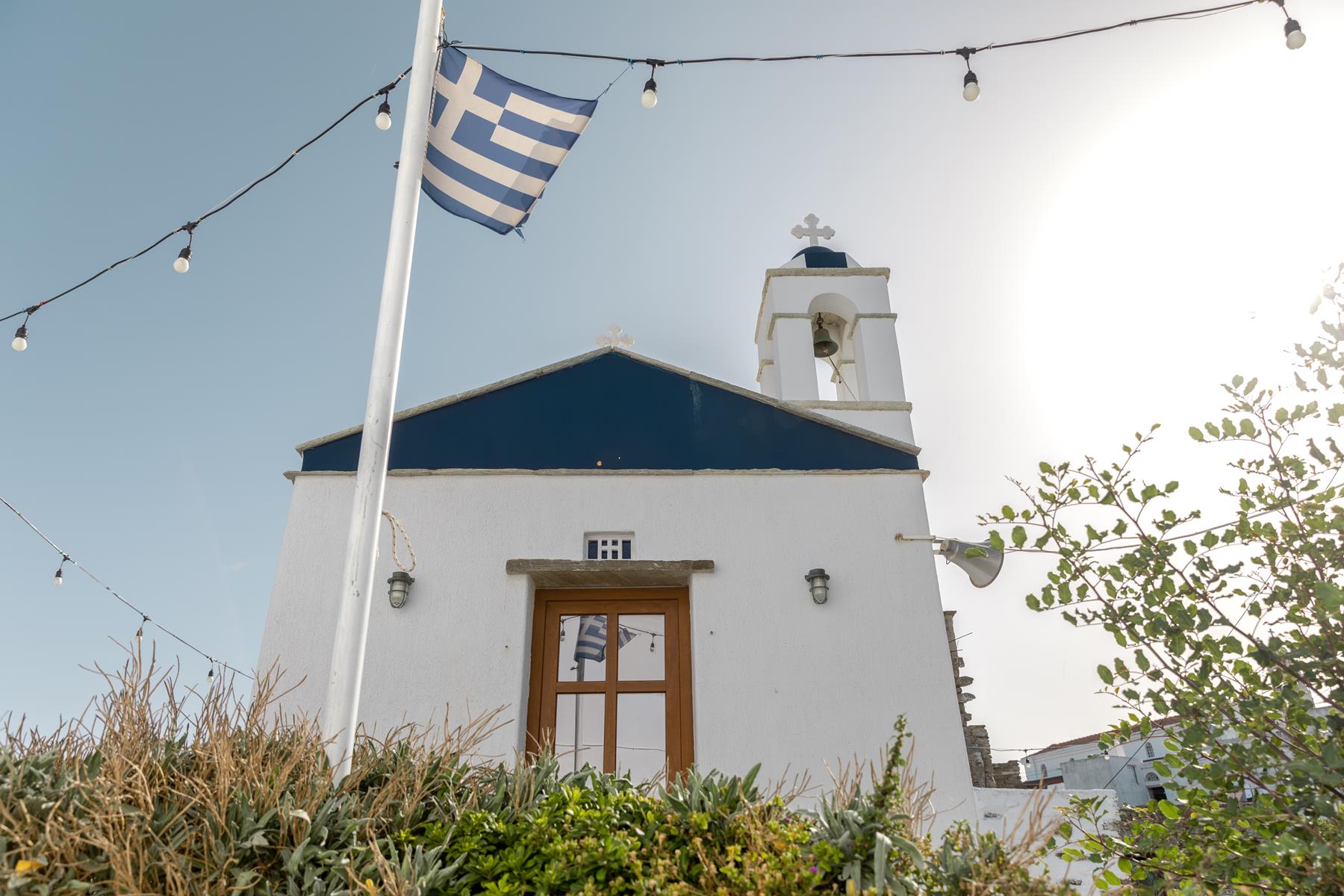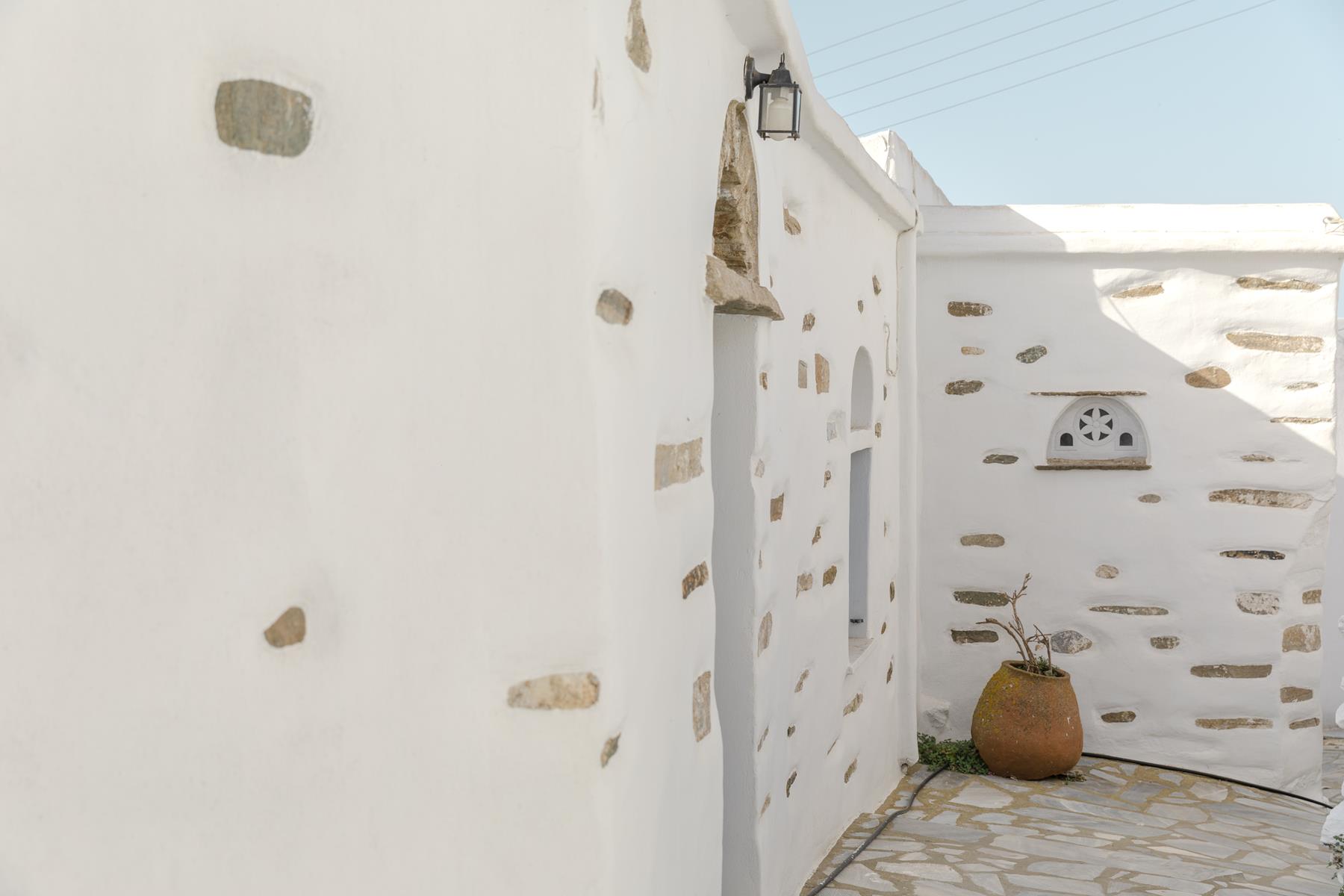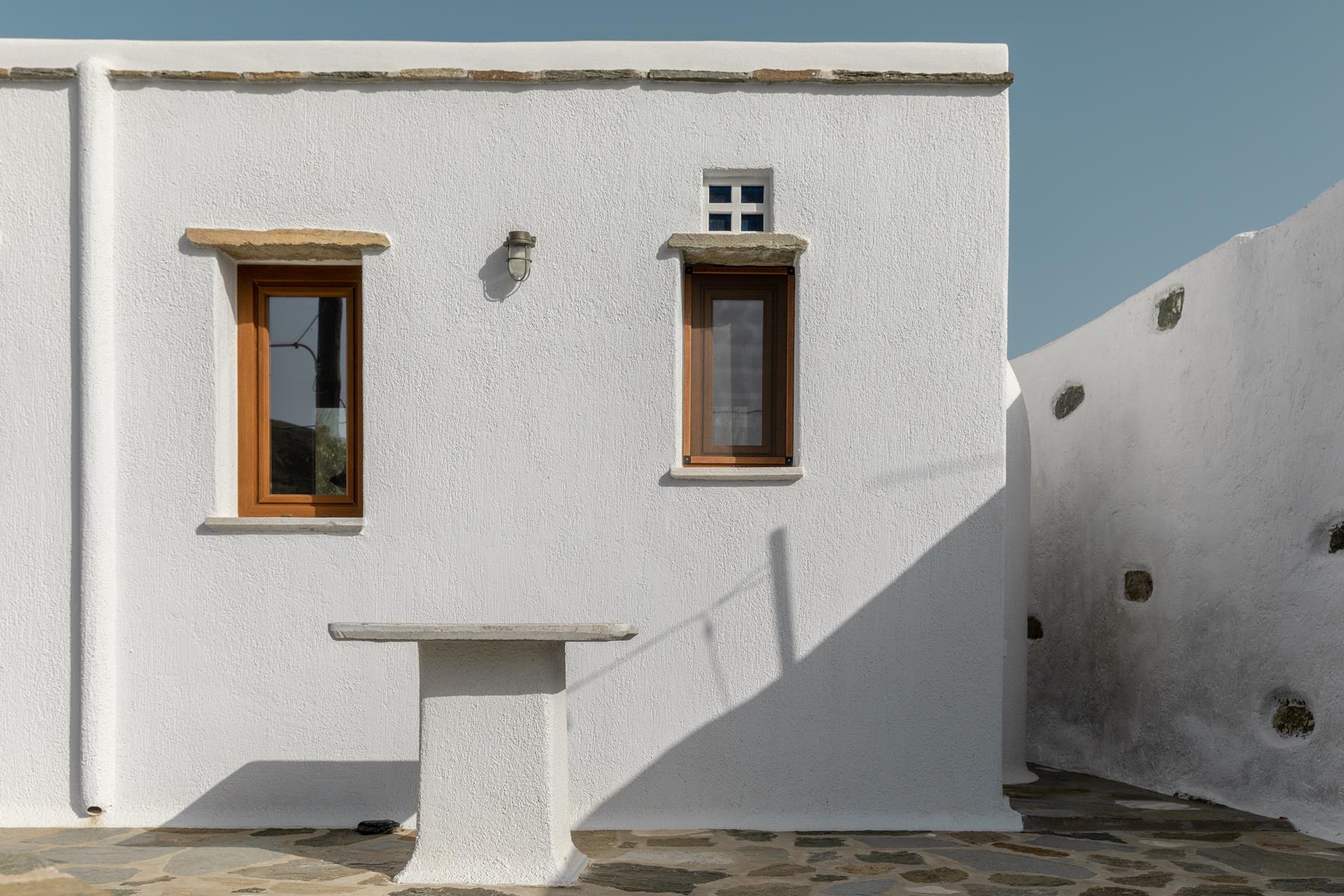Steni is a beautiful traditional village, known for combining the authentic Cycladic architecture with the purest nature that surrounds it. Located in the island’s heart, Steni is sung for its scenic narrow streets, traditional tavernas, and hospitable residents. It is an ideal destination for those who seek peace of mind and an authentic experience. In this article, we will go through its history, showcase its beauty, and discuss what makes Steni special among Tinos’ villages.
Where is Steni
Steni is in Tinos, Cyclades, one of Greece’s most recognised island groups. It is a traditional village, about 11 kilometres Northeast of the island’s Chora. It is located on a hilltop and offers a beautiful view of the surrounding villages and the Aegean Sea. Steni is known for its traditional Cycladic architecture style, its cobbled streets, and scenic houses.
How many people live in Steni
Steni has 295 (highly hospitable) inhabitants, which makes it the second biggest village in Tinos, behind Pyrgos.
Where does Steni’s name originate from
Steni means narrow in Greek. That gives away the whole thing, but the story is interesting nonetheless. Built 416 metres above sea level, on the Livaderi plateau, and right next to the Exomvourgos hill, the only way to fit a village was oblong.
Steni is proud of its youth. Young men and women continue to live in the village and set the tone during every feast.
The village has two parishes: a Greek Orthodox and a Catholic. This makes Steni even more unique and unusual. And then there are the chapels surrounding the town, such as Faneromeni and Agios Dimitrios, all worth visiting.
The village has a rich history, which you can explore by visiting the folklore museum, operating during summertime. The chapels (Faneromeni, Agios Dimitrios) in the surrounding area are very picturesque.
The history of Steni
Steni is a scenic village on the foothills of Mount Tsiknia. It was first developed during the Venetokratia of the Aegean (starting in 1207), which explains the rock-wall buildings and the cobbled paths. Despite the Ottoman occupation (the Ottomans conquered Tinos in 1715), the village maintained its cultural identity.
The locals actively participated in the revolution of 1821. After liberation, they contributed to the village’s reconstruction. Steni had the same problems as any Greek village in the 20th century, which was none other than urbanisation. The population shrunk, but the town maintained its traditional look.
Today, Steni welcomes visitors from all over the world, for its natural beauty, its scenic chapels (like Agios Antonios), and its traditional festivals, which keep the cultural heritage alive.
How to get to Steni
If you rent a car or motorbike at the Port of Tinos, or if you book a taxi, you will only have to follow the Tinou – Stenis Road for about 12 kilometers. The ride lasts close to 20 minutes. Alternatively, there are buses that connect the town of Tinos with the villages, including Steni. Check the timetables at the bus stop.
Then, for the hikers out there, there is a 17-kilometre hiking path, which will keep you occupied for several hours.
Historical monuments of Steni
The village has a plethora of historical monuments, which showcase its rich cultural and religious heritage. The church of Agios Antonios, the village’s patron saint, is known for its architecture and beautiful decoration, but there is so much more than that. Right outside the village, you can find the Kechrovouni Monastery, a highly important pilgrimage where St. Pelagia of Tinos lived.
Steni’s cobbled streets and the village’s rock-wall houses create a living image of what the Cycladic way of life is all about. Moreover, the old drinking fountains and the traditional windmills are all important historic monuments that bring a long-gone era back to life.
Steni traditions and customs
Steni is a village with a rich traditional footprint. Its customs and traditions reflect the cultural and religious heritage of both the village and the island as a whole. The folk customs include various religious celebrations, as well as a major fair in August. It is the festival of Agios Antonios, Steni’s patron saint. On top of the religious celebrations, to honour the saint, a big feast is held, featuring traditional food and music.
Easter in Tinos is also a perfect time to visit Tinos and Steni in particular. The resurrection ceremony comes to its peak when the candles that the faithful hold are lit, or when the epitaph is walked through the village.
If you are lucky enough, you might also experience a wedding in Steni. This is a sight of a lifetime, as the whole day there is traditional music and dancing.
Then there is the carnival. It is the ideal time to feel carefree and let your imagination run wild, next to the locals.
These are special occasions, but you can see traditional customs in Steni’s everyday life, regardless of when you visit. You can find local women weaving, or men partaking in wood sculpting. The village’s residents are proud of their arts and crafts and try to revive Steni’s cultural heritage.
Steni is a place where traditions live and evolve, offering visitors an authentic experience of the local culture and lore.
Staying at Steni
Steni is one of the top destinations in Tinos and many visitors choose to stay there. Which brings up the question. Where to stay in Steni?
The village is ideal for those who seek an authentic Cycladic everyday life experience, far from the noise of the overcrowded touristy areas.
Children can run and play on the main square, folk songs give a unique vibe, and the smell of home-cooked food works your appetite. Village life is nothing like you are used to if you live in a city. When this village life is the Cycladic village life, then the statement is even more true.
Visitors can stay in traditional houses or luxurious suites, which offer the best a modern way of life can offer, while being able to explore the folklore and tradition of the area and the island.
Walk through the narrow alleys of Steni, visit the picturesque churches and chapels, taste traditional food at the local tavernas, and let the locals help you be immersed in a warm and friendly atmosphere. Through its simplicity, Steni is a destination that promises genuine experiences and unforgettable moments to every visitor.
Don’t forget that our luxurious suites provide the best accommodation in Tinos and the best offers for luxurious accommodation in Tinos, with easy access to the best beaches and most importantly Tinos attractions.
What to do in Steni
Steni offers a plethora of activities, both for leisure and relaxation, always in a picturesque and traditional environment. Visitors can enjoy their walk on cobbled paths that lead to ancient churches and windmills. The paths are easily navigated, but for inexperienced hikers, there are professional guides that can guarantee a safe and pleasurable walk.
Traditional tavernas offer a Cycladic culinary trip, with local dishes and drinks, while nearby churches, like Santa Margharita, are ideal for swimming and sunbathing.
During the summertime, visitors can see the most fun side of the island’s way of living. These are the traditional “panigyria”, music and food festivals, commonly associated with the celebration of a town’s patron saint. These feasts are the perfect chance to come in touch with the local culture and tradition.
For wine lovers, Tinos has its very own wineries. They are worth the visit, as they give your stay an extra dimension. Visitors can get familiar with local winemaking and can taste local wines, according to an expert’s instructions. A visit to a winery commonly features a guided tour of the vineyard, and the cellars, as well as wine tasting. All in all, they offer a complete experience and a full package.
Tinos is chockfull of opportunities to have a good time or a cultural experience and Steni, located in the centre of the island, is the ideal base for your operations and the best activities in Tinos.
Where to eat in Steni
Steni offers an excellent array of restaurants and tavernas to choose from. Experience local food and the magnificence of Cycladic cuisine, with dishes made from fresh local products, using traditional recipes, some of which are centuries old. Steni’s residents create a beautiful atmosphere for the visitors to dine in and have the time of their lives.
In the village’s centre, you will find “Apodrasi”. Kostas, the owner, uses exclusively local raw materials to create his traditional dishes, which you can accompany with a house wine or a bottle from one of the island’s artisan wineries. Taste the local cheeses, sausage, and cured meats, the traditional pasta, and the specialty of the house, the pork knuckle. All pork, lamb, and goat products come from Kostas’ breeding farm.
A very popular option is “Platanos”, a taverna also known as Ntouar. The restaurant is known for its roasts. From the local “meze” dishes to the cheeses and cured meats and from the tenderloin to the grill-made liver and the lamb chops, Platanos can satisfy anyone. The service is fast, the staff is friendly, and having a meal under the plane tree and next to stone-built arches is an experience of its own.
The newest entry is “Amiseli”, an all-day cafe and restaurant, recently established in Steni. The cafe welcomes you with a plethora of services and tastes, as you can have your breakfast, meal, or even dinner under the everlasting plane tree, in the middle of the Agios Nikolaos Square.
Where to have a drink at Steni
If you want to have a drink at Steni, Apodrasi Cafe Bar, Amiseli, and Vaptistis Winery are three ideal options.
Apodrasi Cafe Bar, in the centre of the village, offers a relaxing and welcoming vibe. It is perfect for those who want to have a casual coffee or drink, including a glass of local wine.
Amiseli is known for its elegant atmosphere and offers a wide variety of cocktails and fine wines. You will also find local dishes that can bring the food’s flavors forward.
As for Vaptistis Winery, it is yet another excellent choice. It is known for its fine artisan wines, produced with local grapes. The tasting experience you will get is unlike anything you have ever seen or done.
Local events and Festivals in Steni
Steni is famous for its local events and its “panigyria”, fairs that attract both locals and visitors from all over Greece and beyond.
One of the most important fairs in the country is the feast of Our Lady of Tinos, on the 15th of August. On top of the religious service, it features traditional music, dancing, and local food.
On the 20th of July, it is the feast day of the Prophet Elijah, which is celebrated similarly. On the 23rd of April, it is Saint George that is celebrated.
During the summer, there is a plethora of cultural activities and events, like concerts, or theatre plays. As for the spring, then it is time for the popular Honey Festival, where local honey products are presented and sold.
Useful tips before visiting Steni
Before your trip, check the weather forecast. Steni can have a cruel sun during the day, but often gets chilly when the sun sets. Pack your sunscreen and a light jacket. And if you are a hiker, do not neglect packing your hiking equipment.
Look for activities such as hiking, visiting museums or historical monuments, and exploring the local nature. Take an interest in local events and festivals that might be taking place during your visit. Learn about local customs and traditions, as well as practical information like transportation, accommodation, and ways to explore the area, and don’t forget to try local delicacies and dishes, such as the kariki of Tinos and local wines.
These are some general tips that can help you enjoy your visit to the village of Steni in Tinos.
After all, the villas in Tinos by White Tinos didn’t randomly choose a mountain village that has everything within a stone’s throw. The area offers a perfect daily option for refreshing dips in crystal clear waters: Santa Margarita – close to Steni – is undoubtedly the first choice for endless sunbathing on the sand, while Livada, Lichnaftia, and Agios Dimitrios are ideal for playing with the waves.
Children run in the square, island songs add their own touch to the atmosphere, and the smells of homemade food whet your appetite. Life in the village is nothing like the demanding everyday life of the big city, especially when this village has a Cycladic charm and an Aegean breeze.



